Royal College of Art graduate show 2012
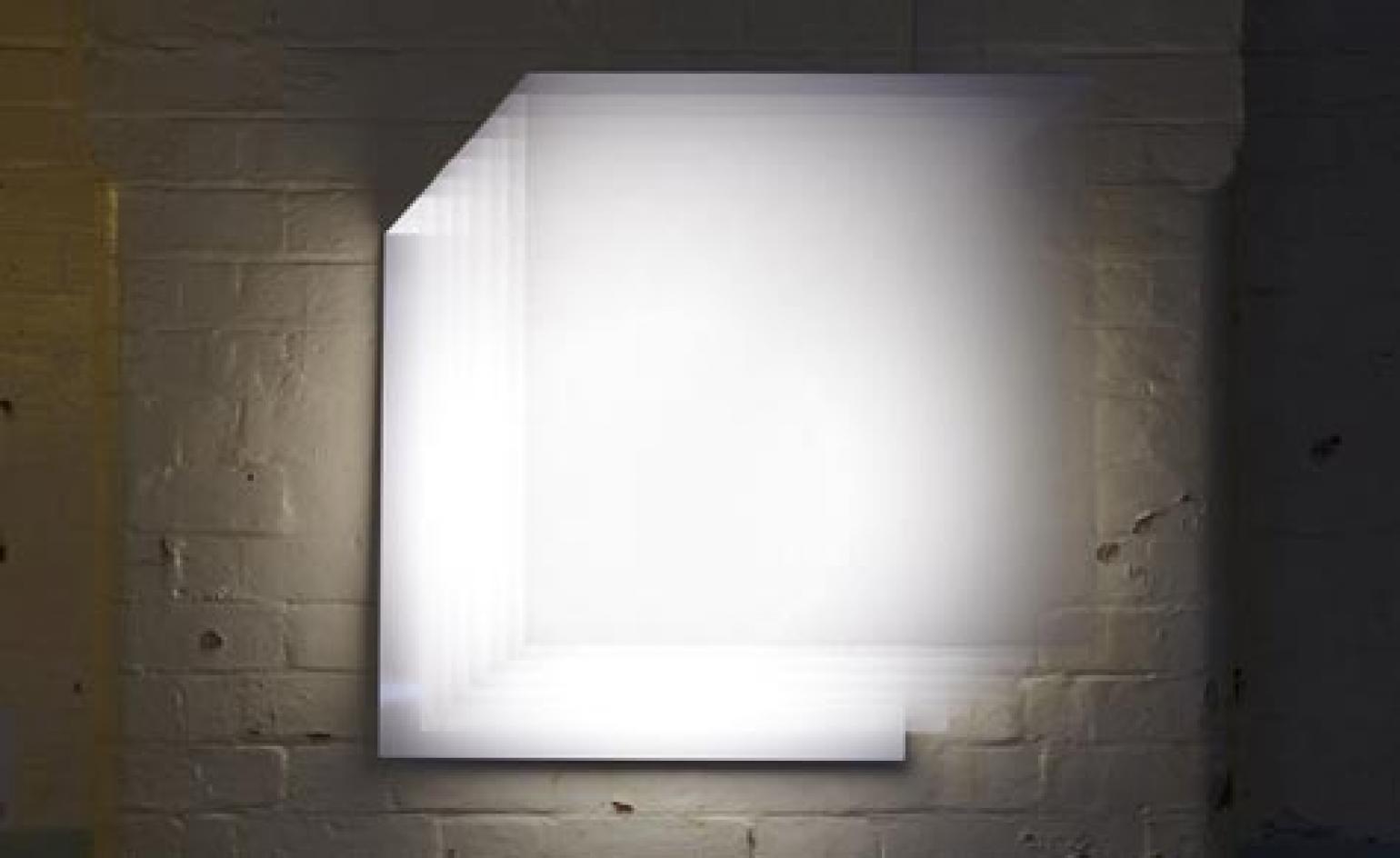
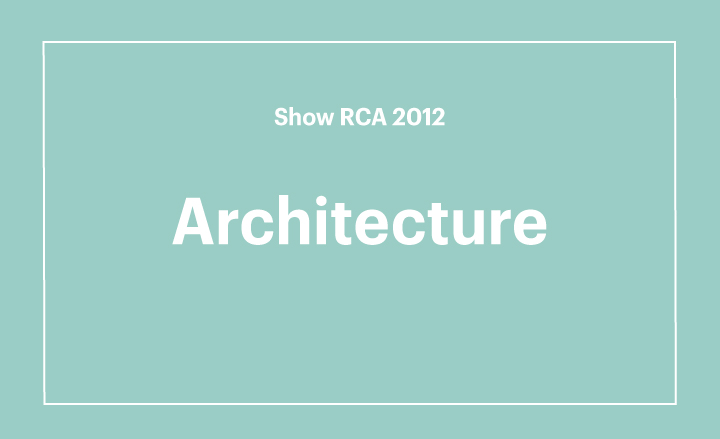
Conflict, juxtaposition, transition and inequality are themes that run through much of the architectural work on show. Students speculate about new ways of resolving an unbalanced society, with technology almost reduced to an afterthought in their search for a meaningful utopian vision. All too often, however, these visions are tainted with uncertainty.
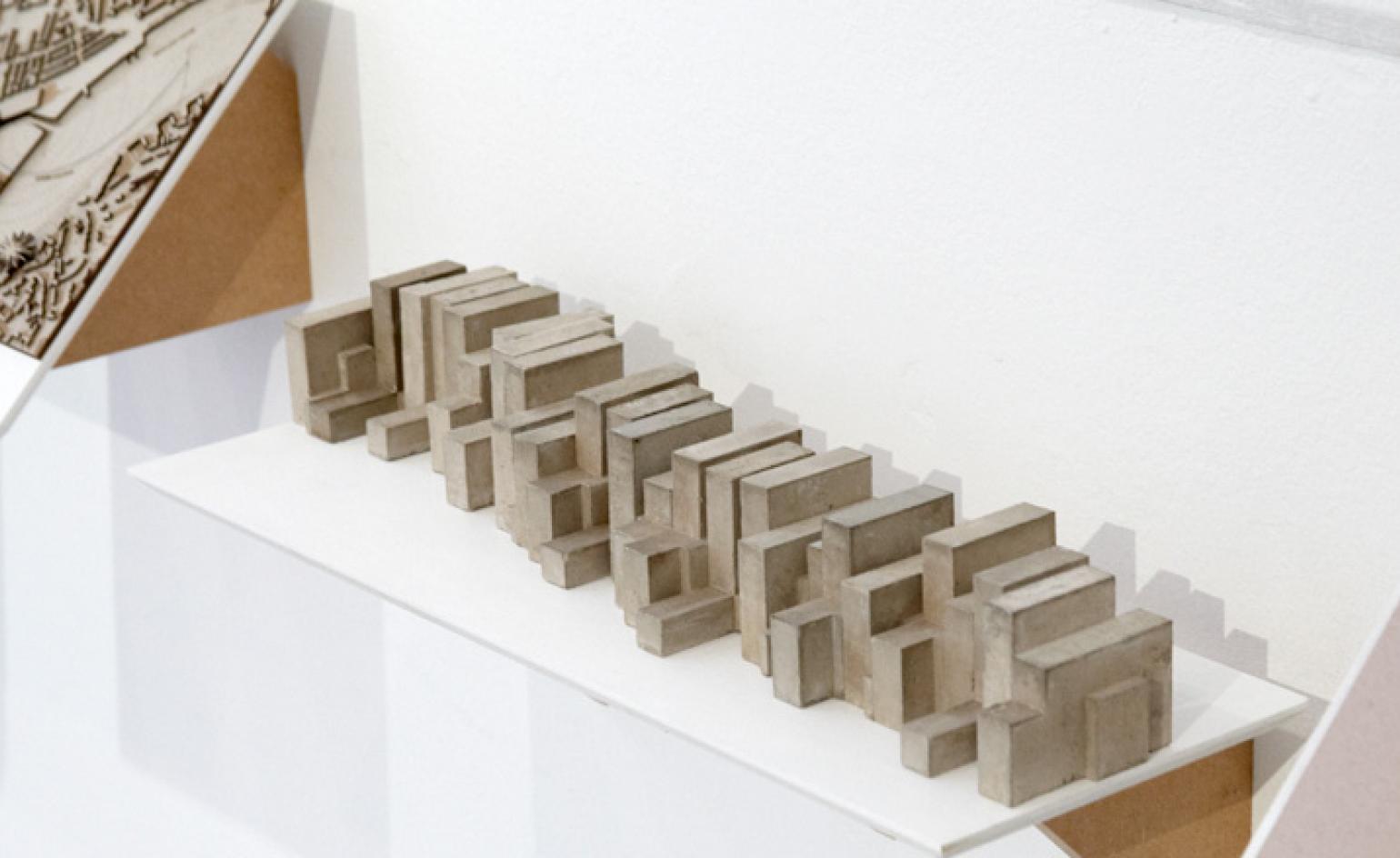
'Untitled' by Charlotte Bovis
Bovis' work aims to find a housing solution for 'famiiles-who-wait' - the demographic of people in London who are on the waiting list for social housing.
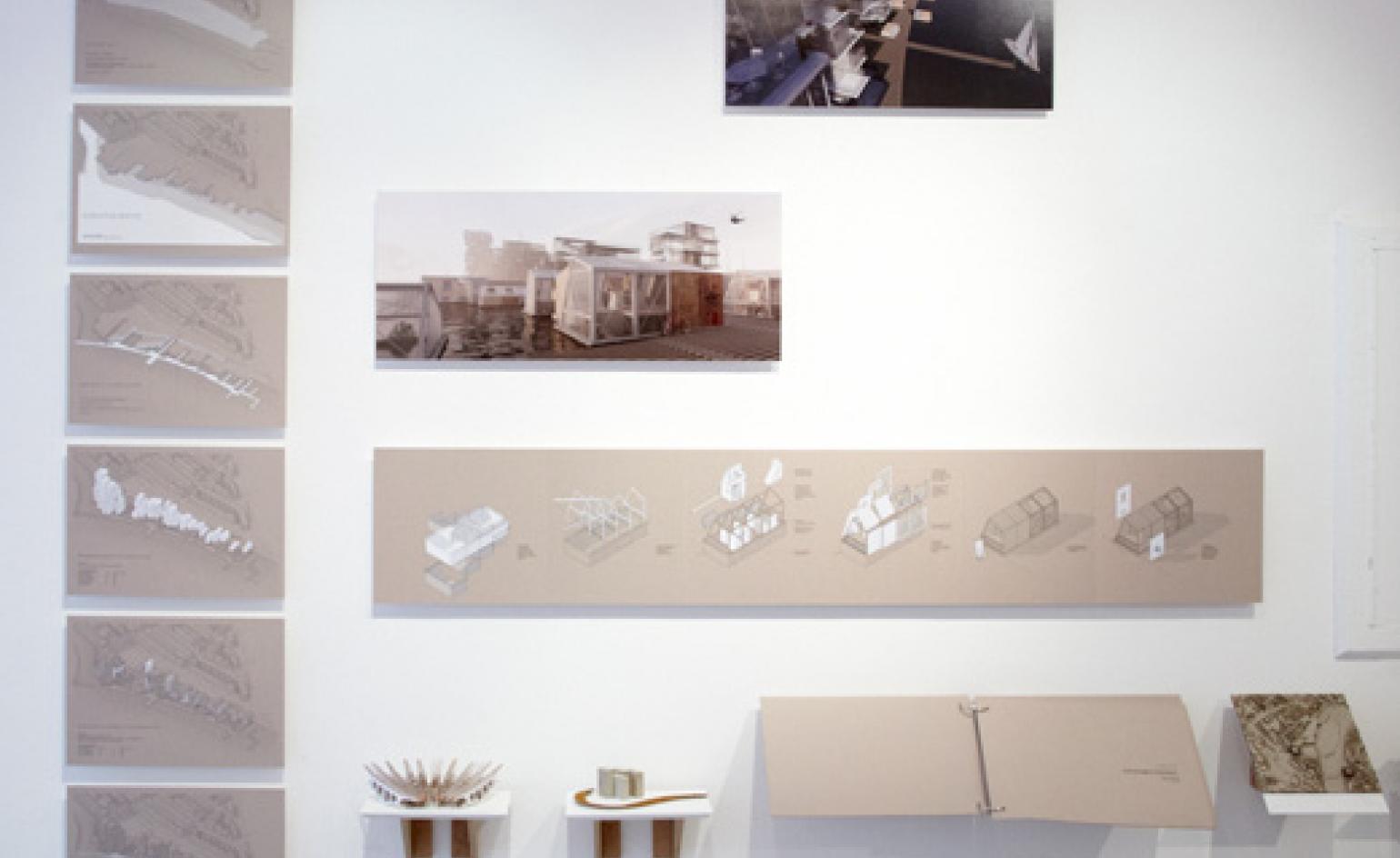
'Untitled' by Charlotte Bovis
Bovis' work aims to find a housing solution for 'famiiles-who-wait' - the demographic of people in London who are on the waiting list for social housing.
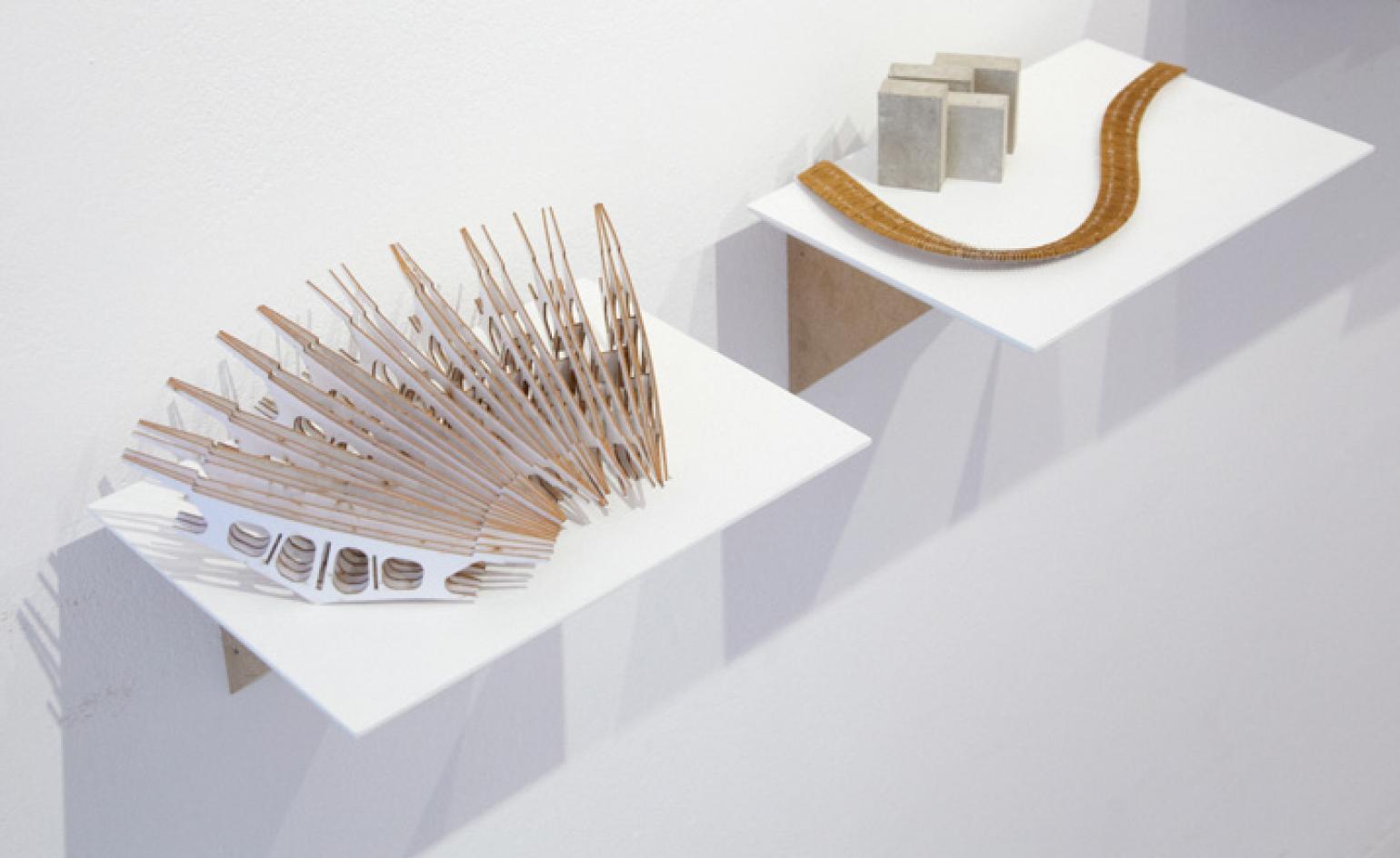
'Untitled' by Charlotte Bovis
Bovis' work aims to find a housing solution for 'famiiles-who-wait' - the demographic of people in London who are on the waiting list for social housing.

The 'BRIC' House by Haiwei Xie
Xie's work aims to respond to the question of 'how can technologies change the relationship between family and house?' The 'BRIC' House is a high-quality, high-density, low-price housing scheme which proposes the creation of multicultural communal spaces for immigrants in Chelsea Barracks
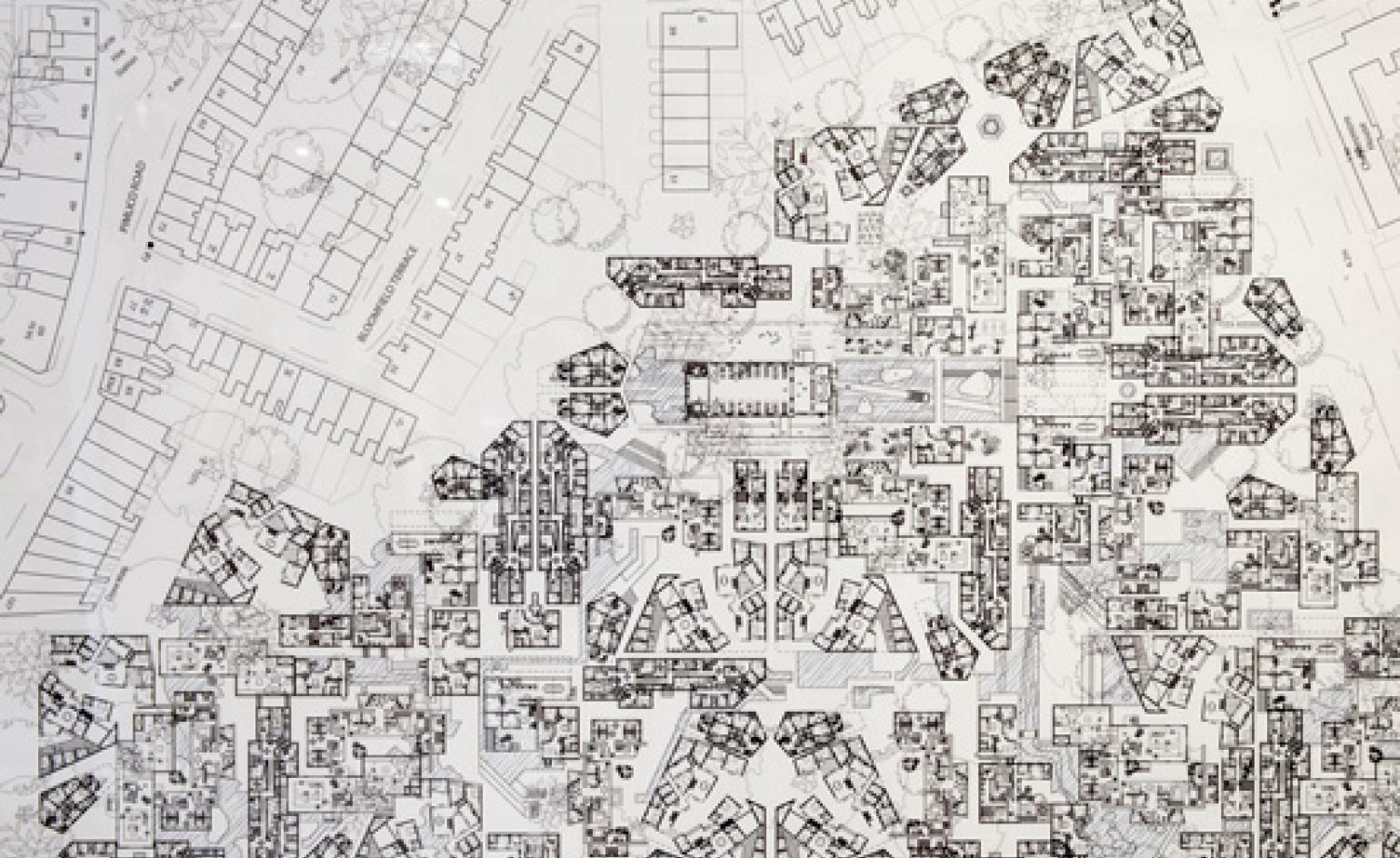
The 'BRIC' House by Haiwei Xie
Xie's work aims to respond to the question of 'how can technologies change the relationship between family and house?' The 'BRIC' House is a high-quality, high-density, low-price housing scheme which proposes the creation of multicultural communal spaces for immigrants in Chelsea Barracks.
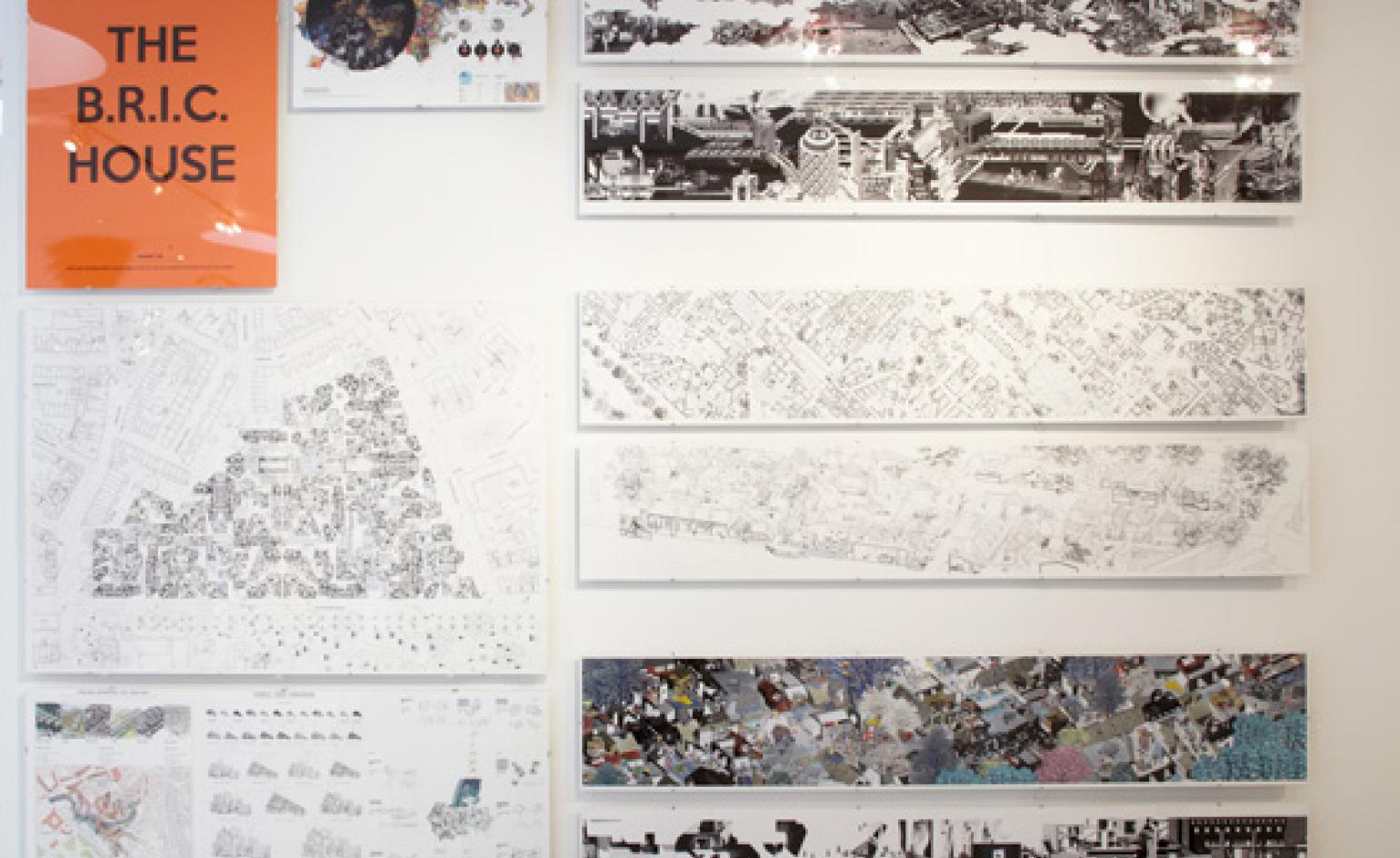
The 'BRIC' House by Haiwei Xie
Xie's work aims to respond to the question of 'how can technologies change the relationship between family and house?' The 'BRIC' House is a high-quality, high-density, low-price housing scheme which proposes the creation of multicultural communal spaces for immigrants in Chelsea Barracks.
Wallpaper* Newsletter
Receive our daily digest of inspiration, escapism and design stories from around the world direct to your inbox.
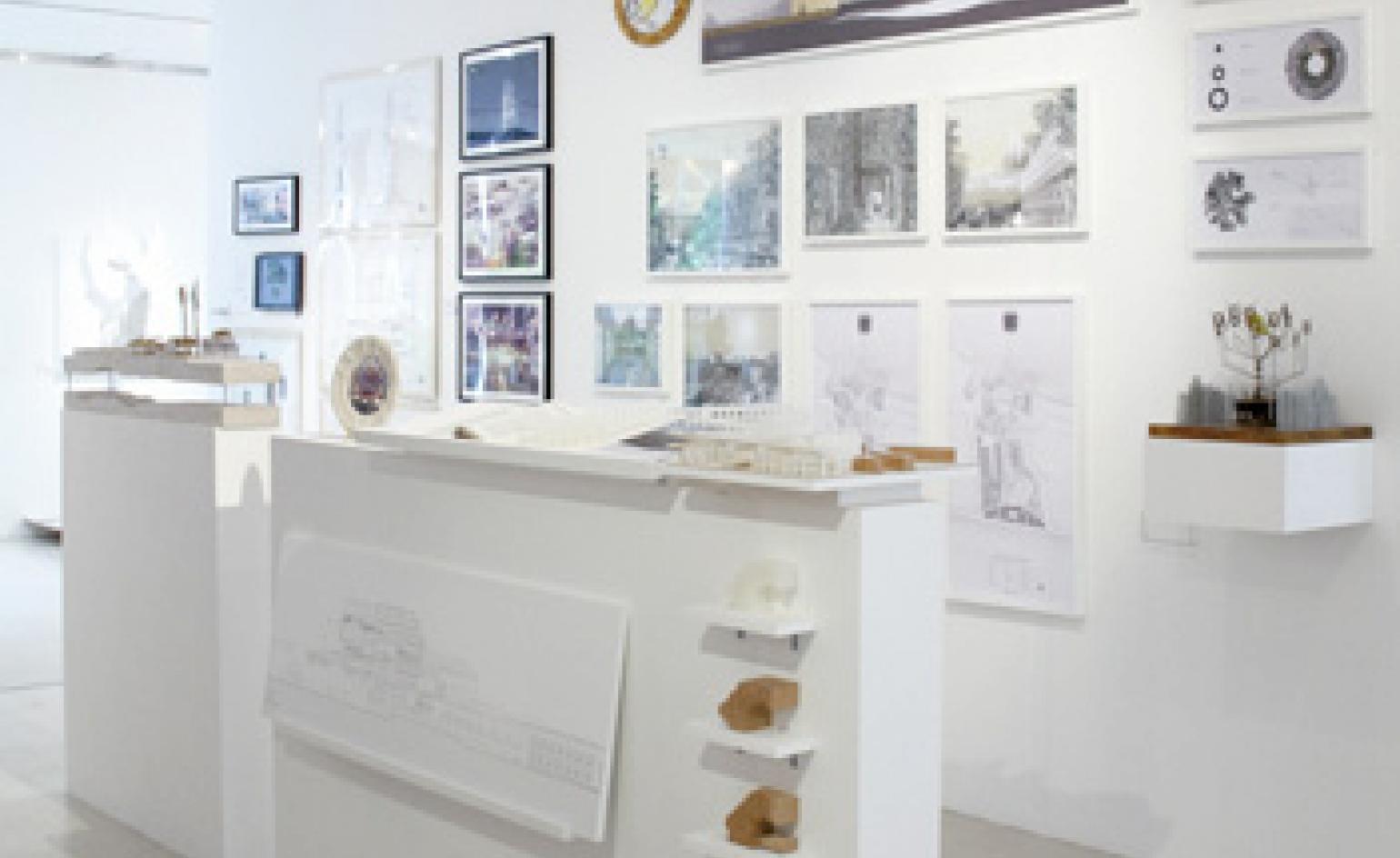
'At Her Majesty's Pleasure Gardens' by Jasmin Dieterle
Dieterle's project assumes that an urban environment characterised by restrictions provokes a counter-desire for thrills and the exhilaration of spectacle. The urban architecture proposed examines the amalgamation of a prison and a pleasure garden, exploring the relationship between prison inmate and citizen; hiding versus exposure.
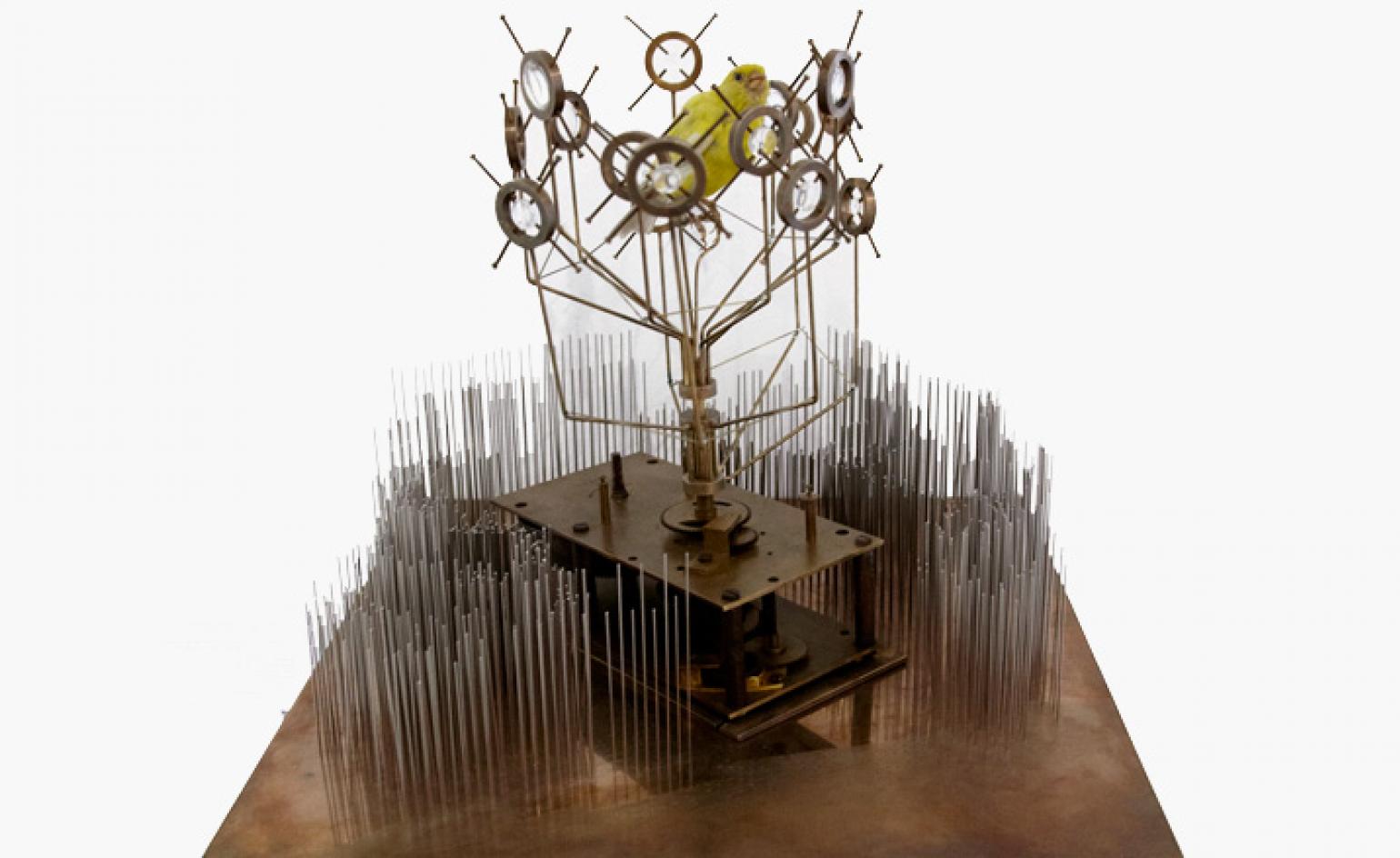
'At Her Majesty's Pleasure Gardens' by Jasmin Dieterle
Dieterle's project assumes that an urban environment characterised by restrictions provokes a counter-desire for thrills and the exhilaration of spectacle. The urban architecture proposed examines the amalgamation of a prison and a pleasure garden, exploring the relationship between prison inmate and citizen; hiding versus exposure.

'Westminster' by Thomas Surman
Surman's piece examines the dilemma of social housing in central London. His work has been created using digital line drawing on paper to sketch very fine, geometric communal spaces which articulate the grid-like multi-centred configuration of London.
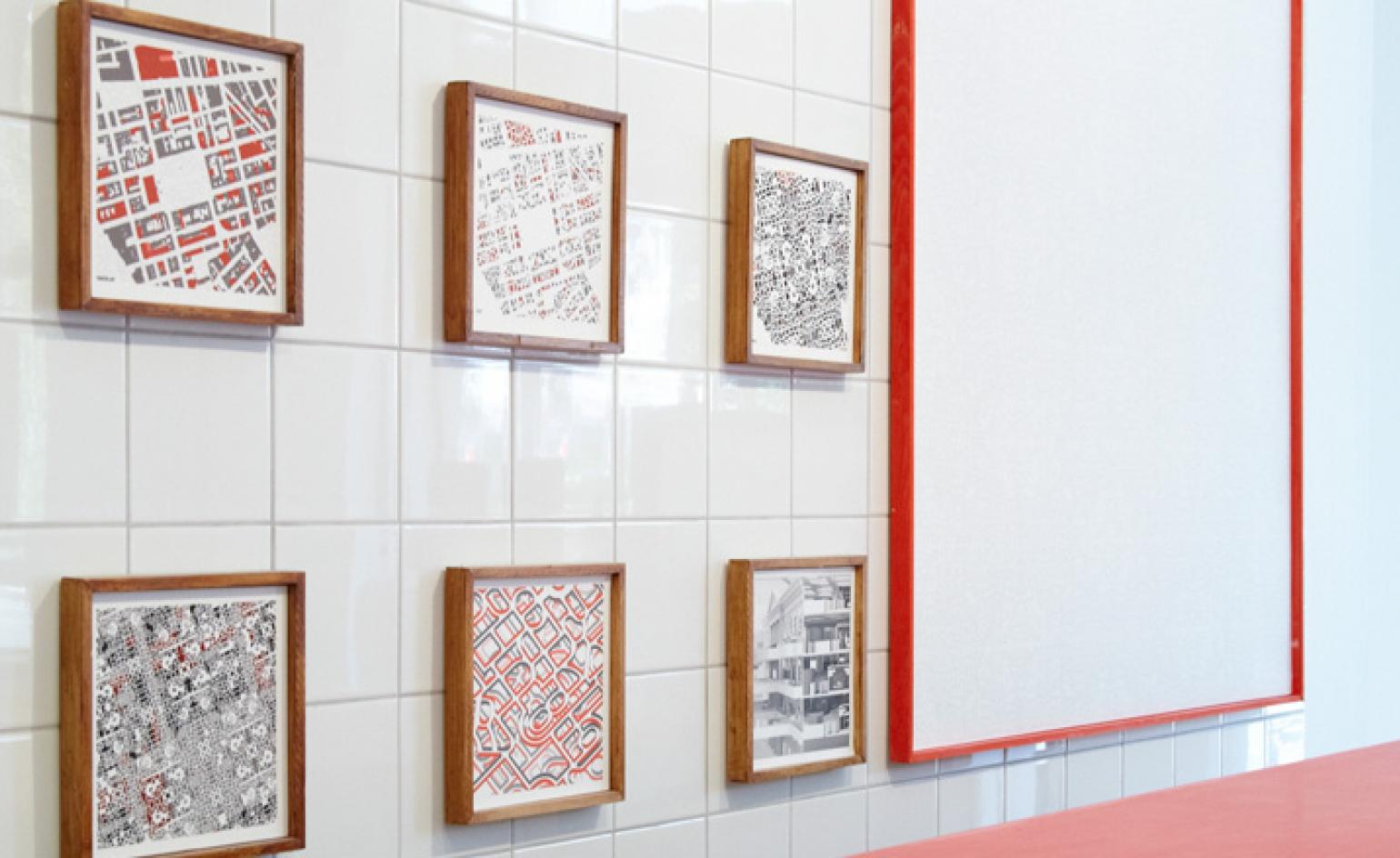
'Westminster' by Thomas Surman
Surman's piece examines the dilemma of social housing in central London. His work has been created using digital line drawing on paper to sketch very fine, geometric communal spaces which articulate the grid-like multi-centred configuration of London.
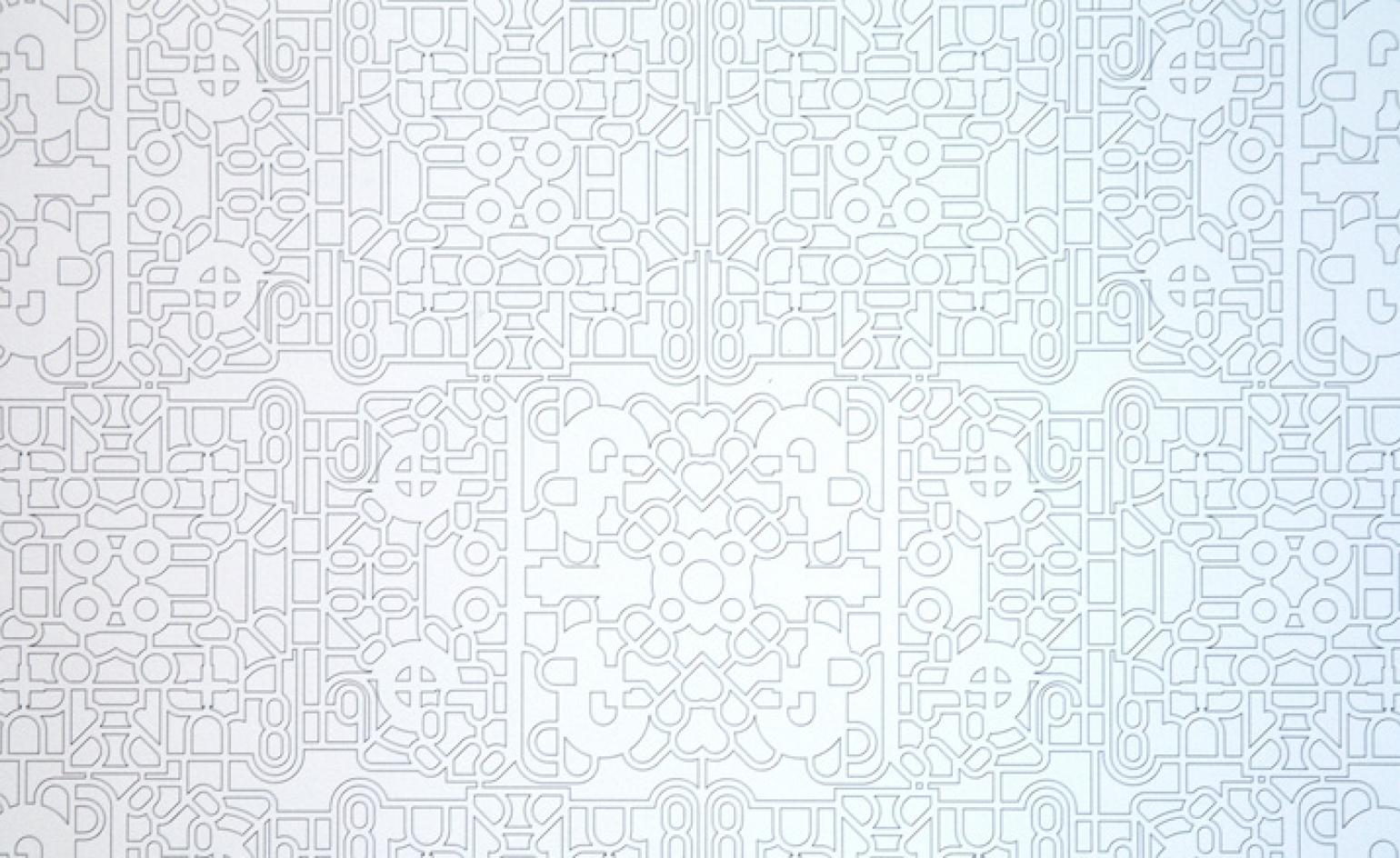
'Westminster' by Thomas Surman
Surman's piece examines the dilemma of social housing in central London. His work has been created using digital line drawing on paper to sketch very fine, geometric communal spaces which articulate the grid-like multi-centred configuration of London.
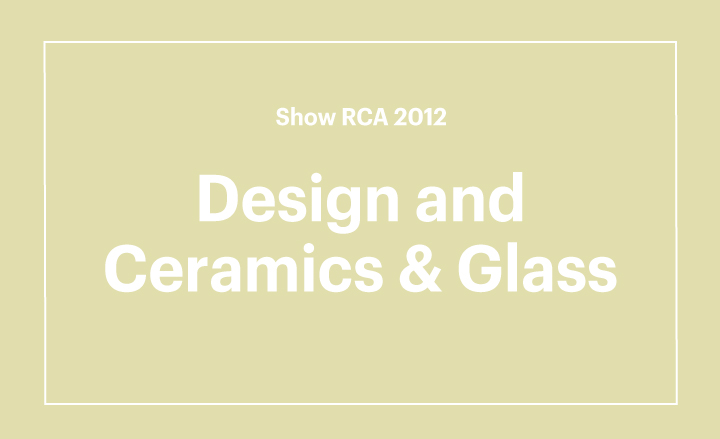
A walk through the halls exhibiting work in the categories of Design and Ceramics & Glass reveals a huge diversity of styles, inspirations and techniques. One recurrent aesthetic theme we picked out, however, was the layering or stacking of materials to develop a sometimes static, sometimes ever-evolving forms. Sustainability and energy conservation were constant conceptual preoccupations and, with food presently more fashionable than a Prada bandeau top, it's no surprise that how and what we eat has become a strong source of inspiration to the design student. It is particularly the social act of eating which gains attention, turning communal consumption into interactive theatre.
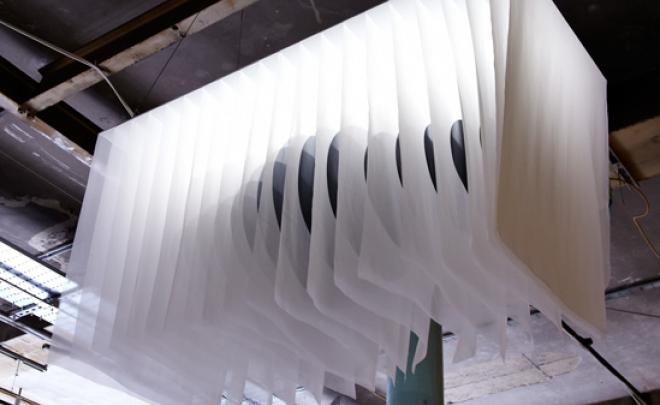
Chiffon Light by Norie Matsumoto
Using thin transparent fabric hung vertically in layers to create a 3D structure, Norie Matsumoto has created a spectral light that plays with shadows and moiré patterns. Different perspectives offer different colour intensities and a range of forms
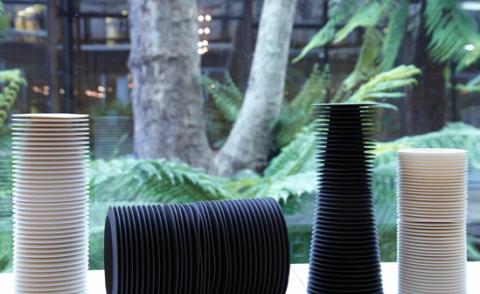
Objects, by Nicholas Lees
Lees likes to explore, through drawing and making simultaneously, the close connection between the two dimensions. He pushes his materials to create the same fine detail apparent in his drawings. The delicate layering of the ceramic in these vessels is contrasted by the solid architectural quality of their silhouettes
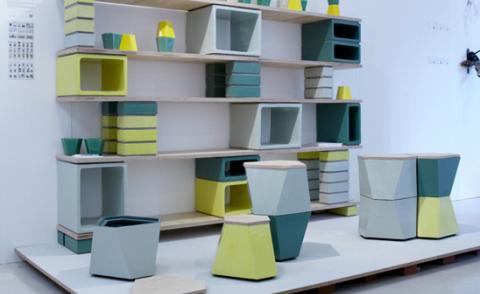
Ceramic modules by Camille Flammarion
Flammarion's colourful ceramic modules reflect a keen interest in architecture. Developed on two different scales, these faceted bricks can be assembled into an array of forms and sizes to make vases and stools but the larger modules can also be constructed into shelves and interior walls
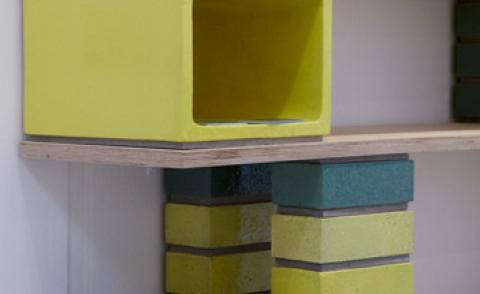
Ceramic modules by Camille Flammarion
Flammarion's colourful ceramic modules reflect a keen interest in architecture. Developed on two different scales, these faceted bricks can be assembled into an array of forms and sizes to make vases and stools but the larger modules can also be constructed into shelves and interior walls
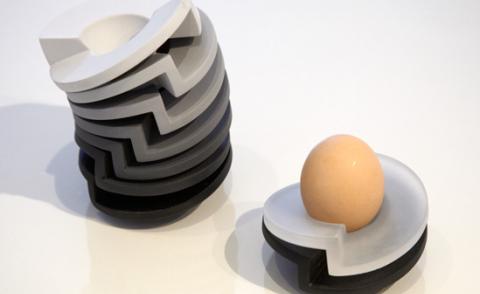
'Halo' egg cup by Solomia Zoumaras
MA graduate Solomia Zoumaras plays with geometry and symmetry to create pieces with an even balance of aesthetic and function - pleasure from the use of the object has equal weight to its ability to elicit an emotional response. The collection includes these stacking egg cups, innovative toast racks, vases and fruit bowl, all with a geometric, layered theme
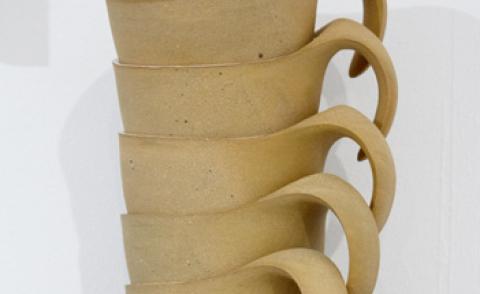
Hygge, Nordic tools for everyday living, by Sissel Wathne
Simplicity, material and light are the starting points for Wathne's work. For her 'Hygge' tableware, she explored Nordic traditions and habits, creating pieces that are gently curved to sit snugly in the hand, with a surface texture that gives a feeling of warmth
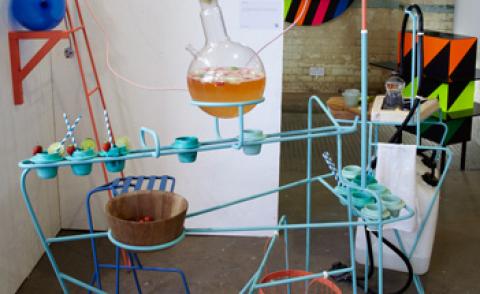
Lava Lemonade by Aleksandra Mirecka
Leading the 'eating revolution' at the RCA is Aleksandra Mirecka, with her Lava Lemonade magical café. The whole rig - from the handmade glasses, to the abstract animal bench and fantastical lemonade counter - all induce a dreamlike reality, intended to make a theatrical experience of everyday life
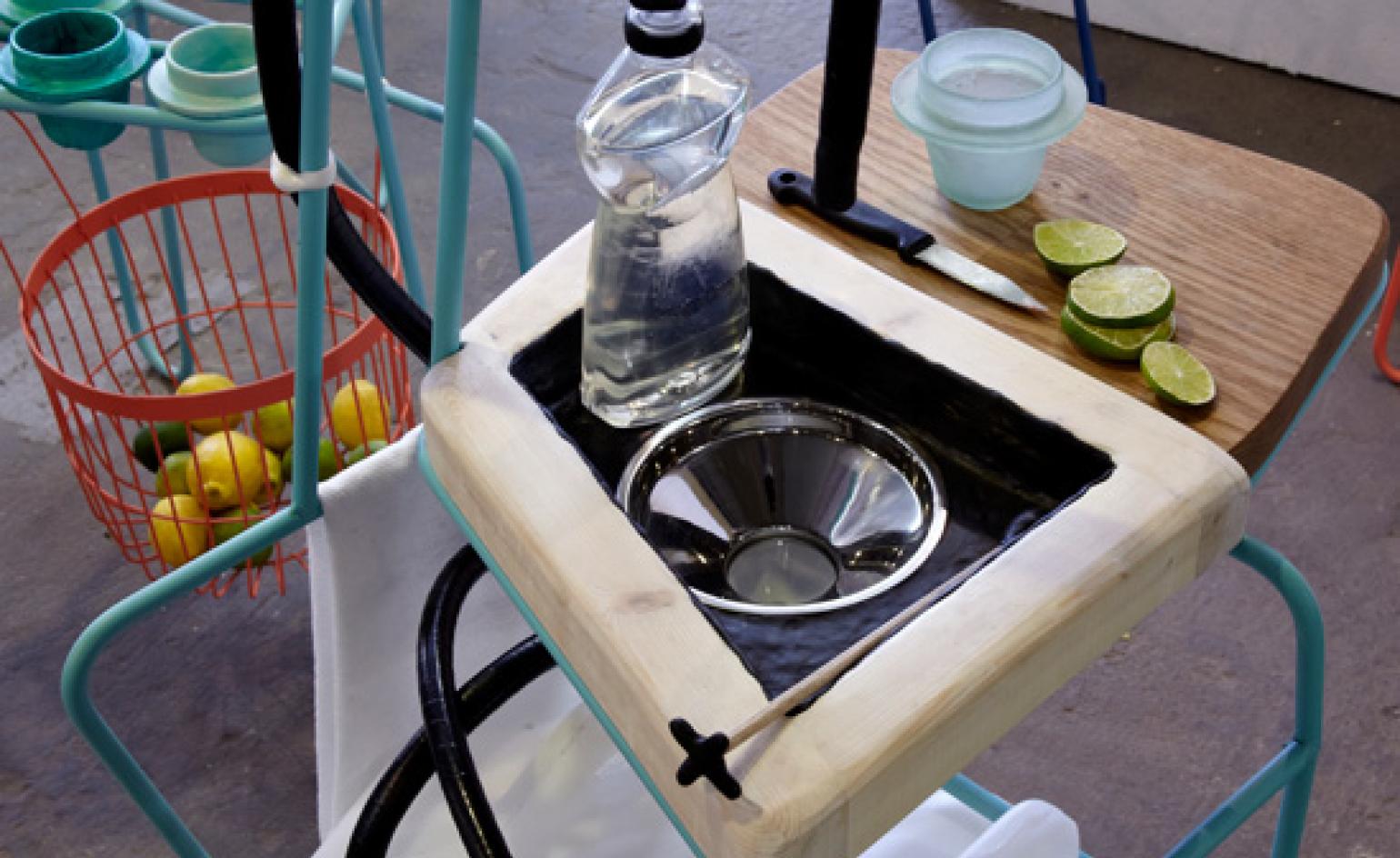
Lava Lemonade by Aleksandra Mirecka
Leading the 'eating revolution' at the RCA is Aleksandra Mirecka, with her Lava Lemonade magical café. The whole rig - from the handmade glasses, to the abstract animal bench and fantastical lemonade counter - all induce a dreamlike reality, intended to make a theatrical experience of everyday life

The Energy Collection by Marjan van Aubel
Is this the future? Marjan van Aubel's collection of solar glassware is the most eco dining-ware we've seen. These tastefully-hued glasses and plates absorb energy the whole time light is on them. When the plates or glasses are returned to the cabinet-come-battery, this stored solar energy is banked and can in turn serve any number of charging purposes
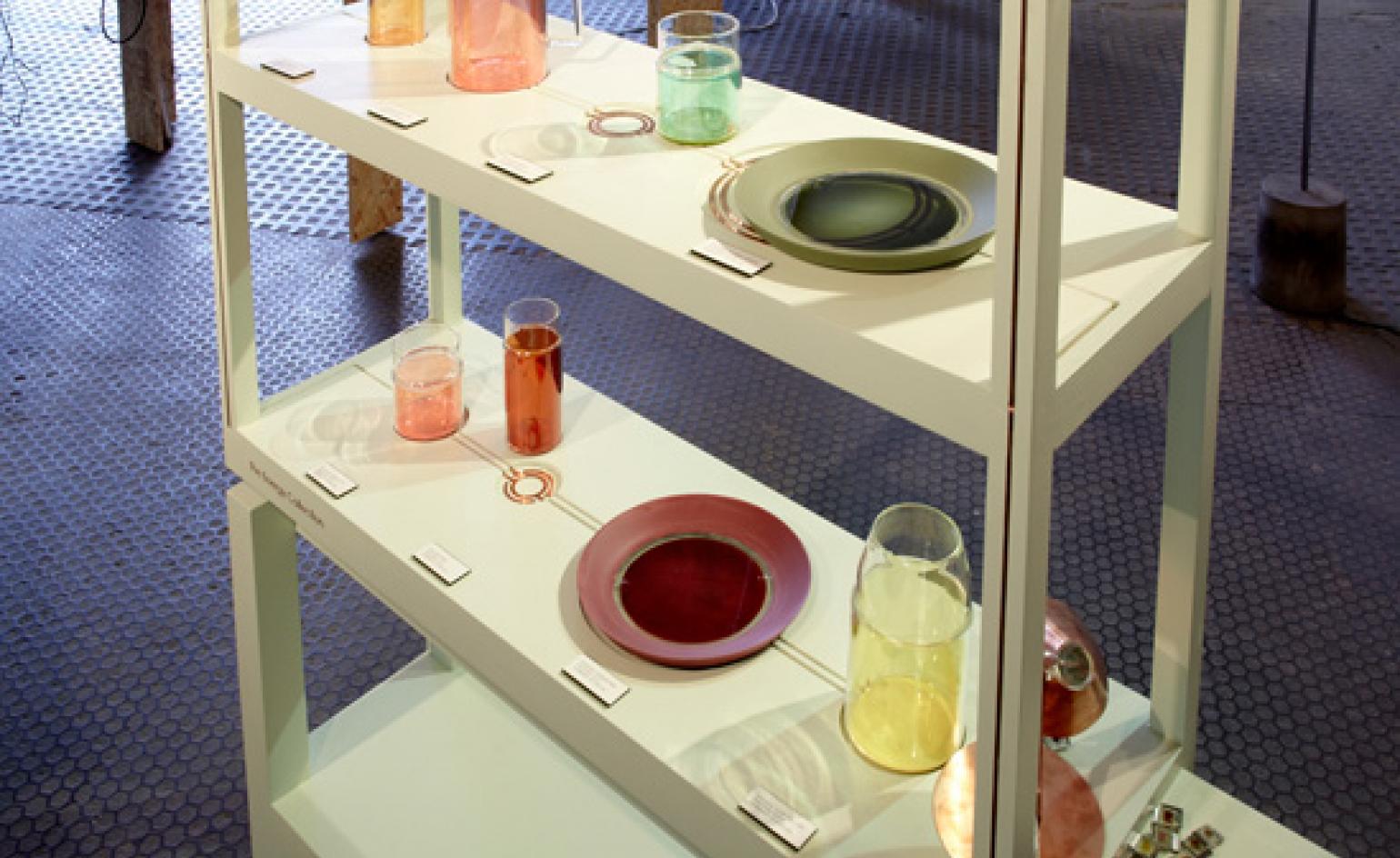
The Energy Collection by Marjan van Aubel
Is this the future? Marjan van Aubel's collection of solar glassware is the most eco dining-ware we've seen. These tastefully-hued glasses and plates absorb energy the whole time light is on them. When the plates or glasses are returned to the cabinet-come-battery, this stored solar energy is banked and can in turn serve any number of charging purposes
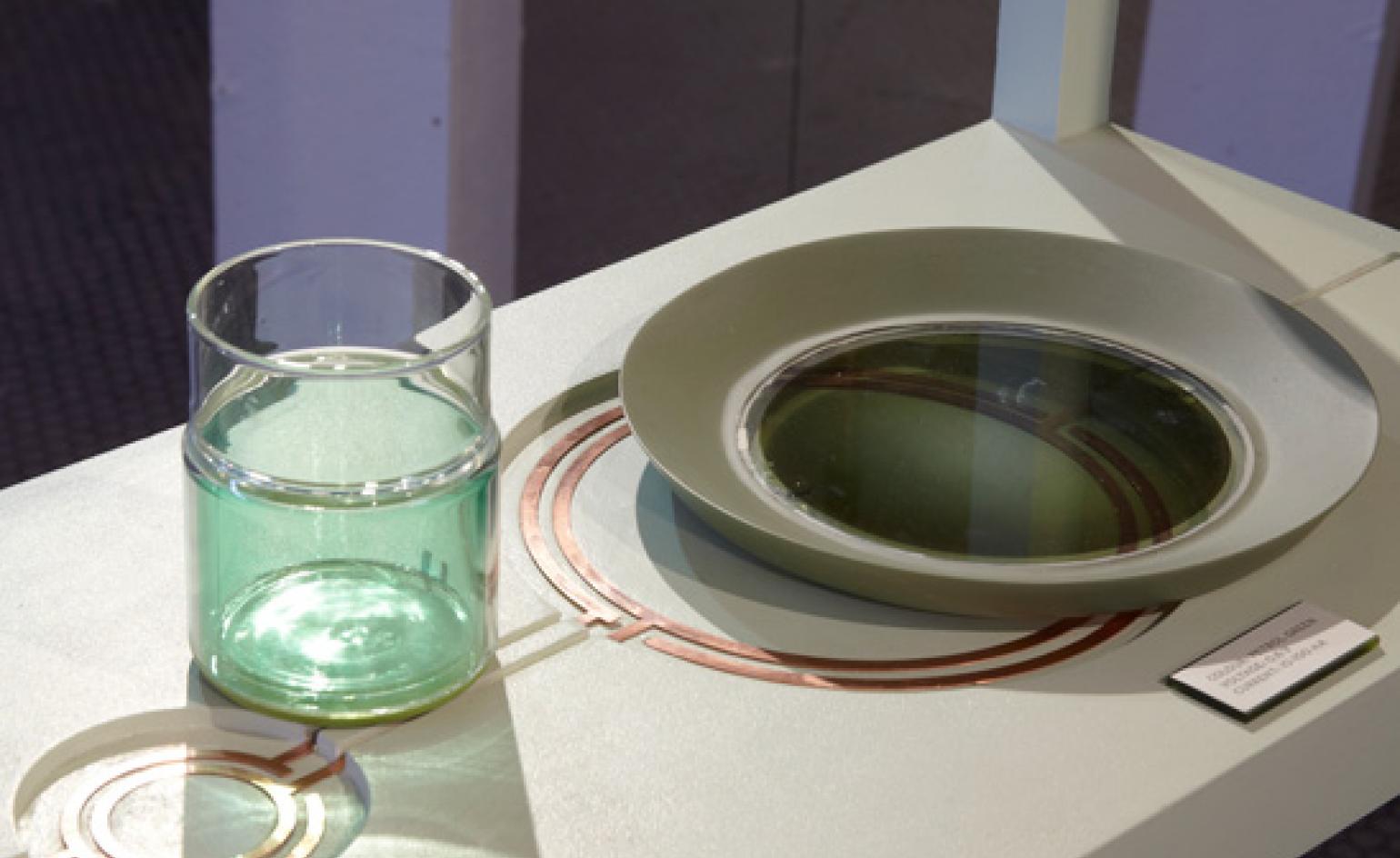
The Energy Collection by Marjan van Aubel
Is this the future? Marjan van Aubel's collection of solar glassware is the most eco dining-ware we've seen. These tastefully-hued glasses and plates absorb energy the whole time light is on them. When the plates or glasses are returned to the cabinet-come-battery, this stored solar energy is banked and can in turn serve any number of charging purposes
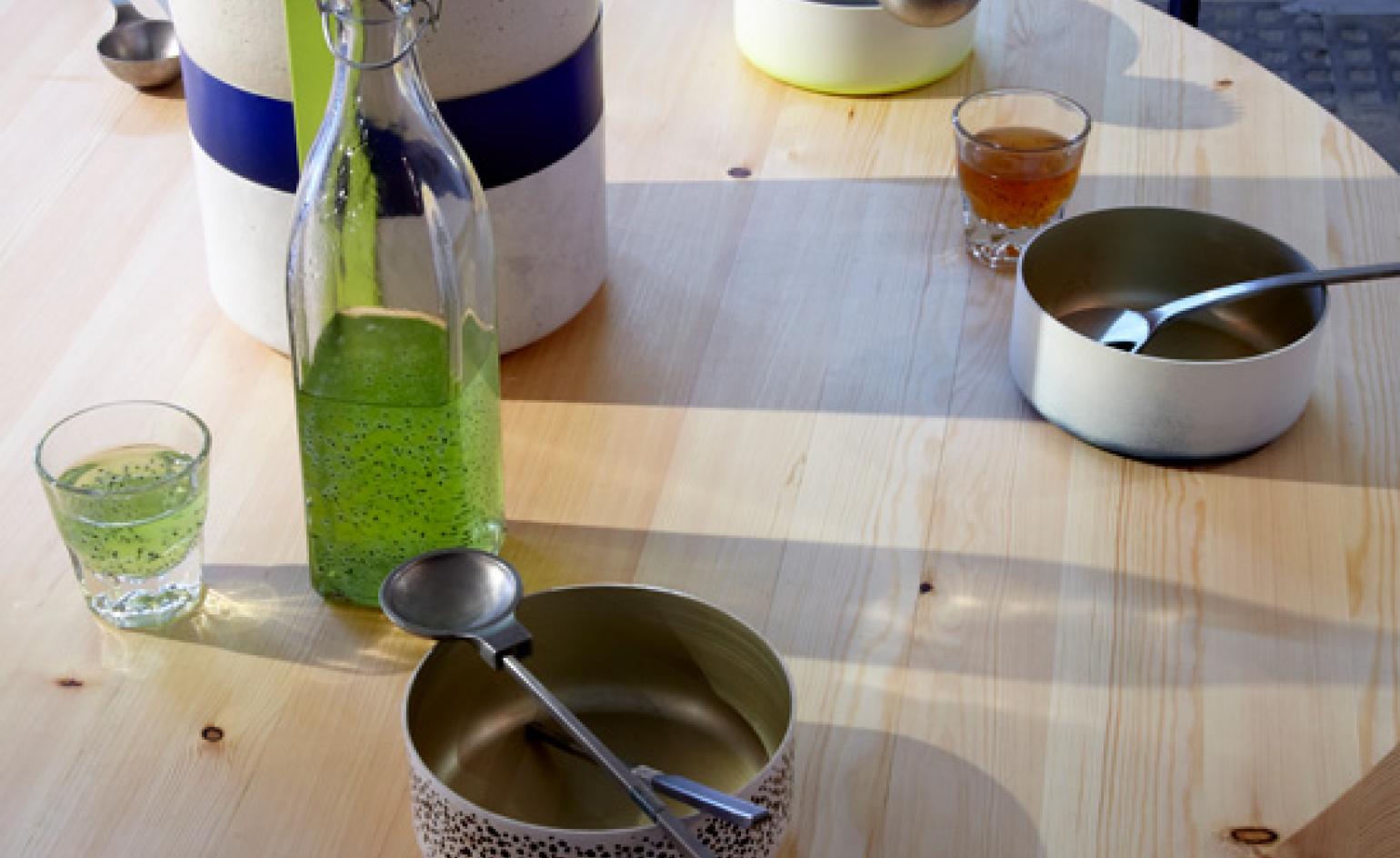
Potluck Vessels by Lola Lely
Hoping to rekindle a sense of social cohesion - particularly round the dining table - Lola Lely invites people to dig in around her communal cooking table. Guests will be encouraged to bond by sharing from the camping-inspired stacking pots and serving utensils made from a variety of materials including metal, wood, ceramics and textiles.
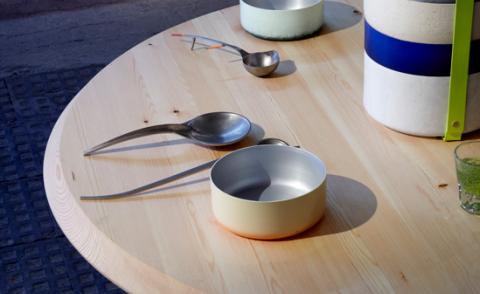
Potluck Vessels by Lola Lely
Hoping to rekindle a sense of social cohesion - particularly round the dining table - Lola Lely invites people to dig in around her communal cooking table. Guests will be encouraged to bond by sharing from the camping-inspired stacking pots and serving utensils made from a variety of materials including metal, wood, ceramics and textiles.
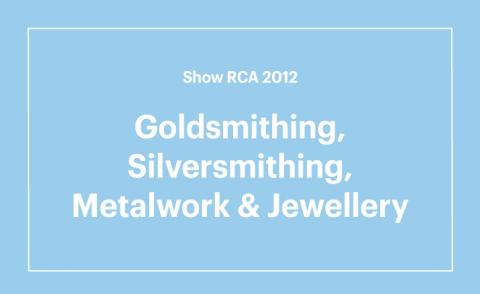
Traditional perceptions of value are being turned on their head at the RCA. Everyday materials are heightened into something more precious, while gold is mixed with honey, and pearls are strung on steal. Porcelain - once popular in 18th century watchcases - is also making a re-appearance, thanks to its smooth surface and high shine.
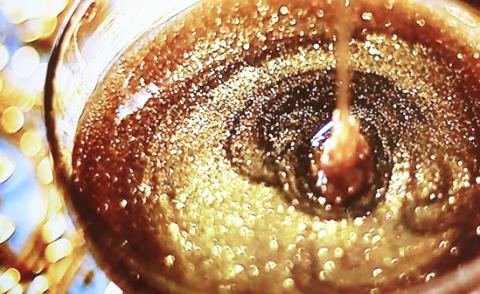
'Gold Footage 1' by Alice McLean
McLean's work plays with our perception of how gold should look and function. She mixes it with honey to create a runny substance, which is edible and traceable (as featured in her film) or turns it into tea
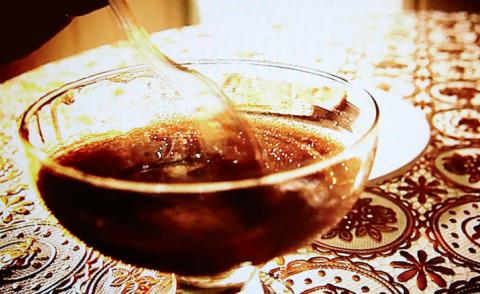
'Gold Footage 1' by Alice McLean
McLean's work plays with our perception of how gold should look and function. She mixes it with honey to create a runny substance, which is edible and traceable (as featured in her film) or turns it into tea
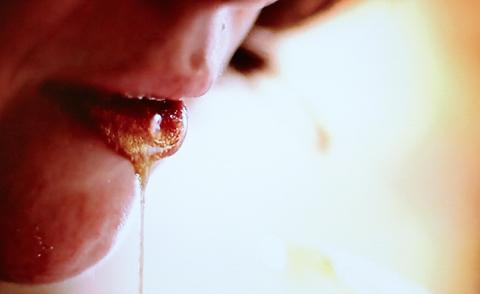
'Gold Footage 1' by Alice McLean
McLean's work plays with our perception of how gold should look and function. She mixes it with honey to create a runny substance, which is edible and traceable (as featured in her film) or turns it into tea
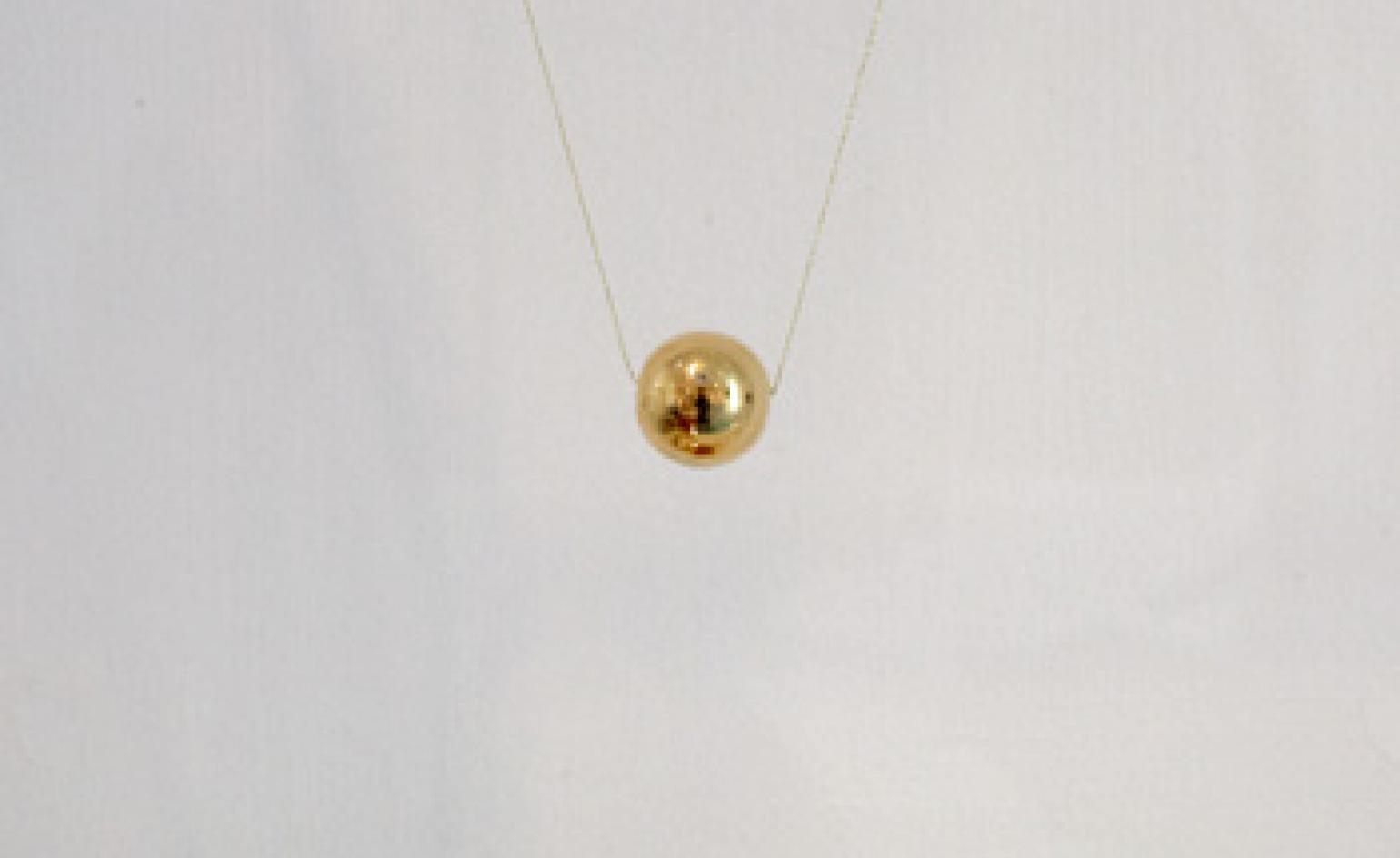
More experimentations with gold by Alice McLean
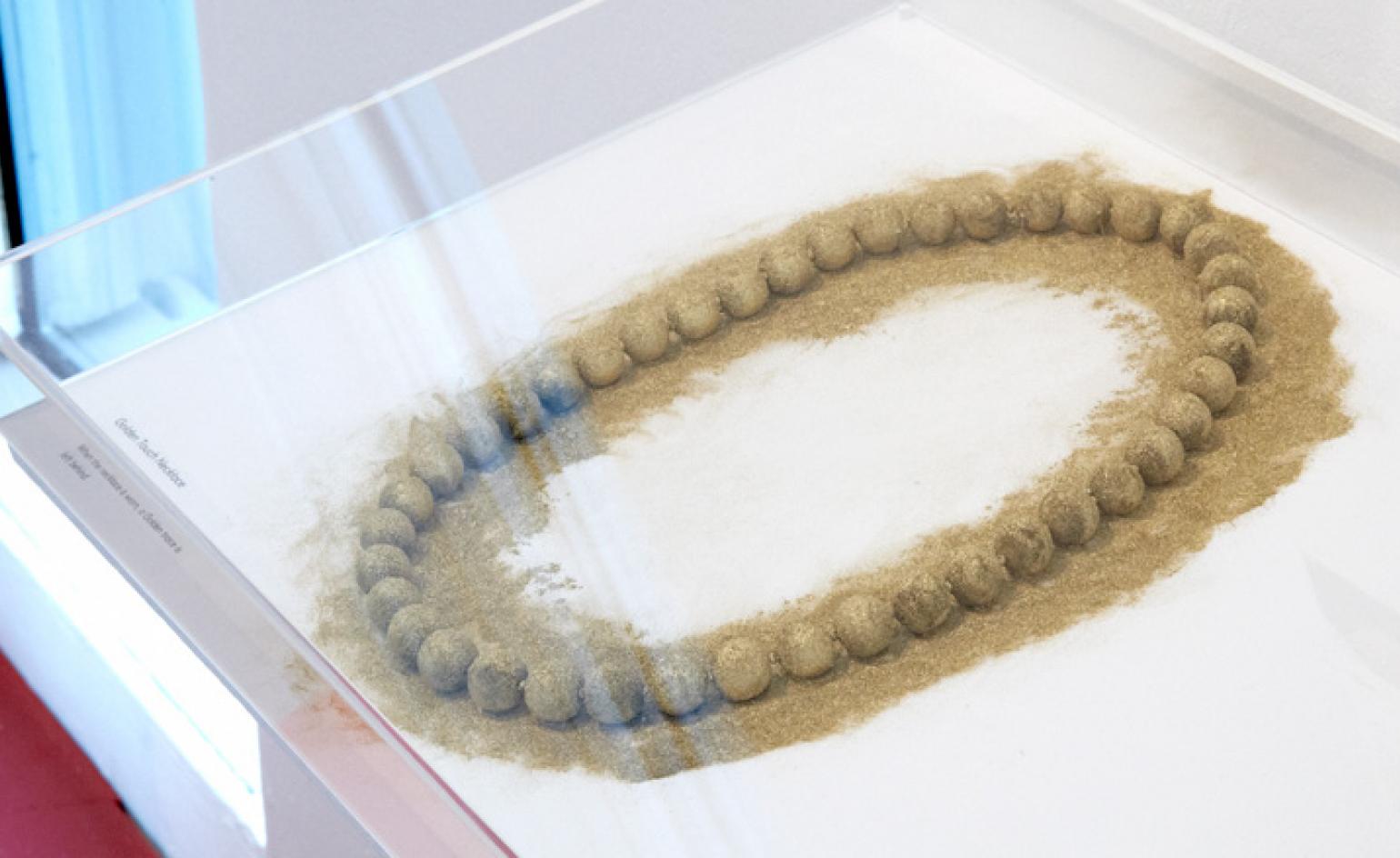
More experimentations with gold by Alice McLean
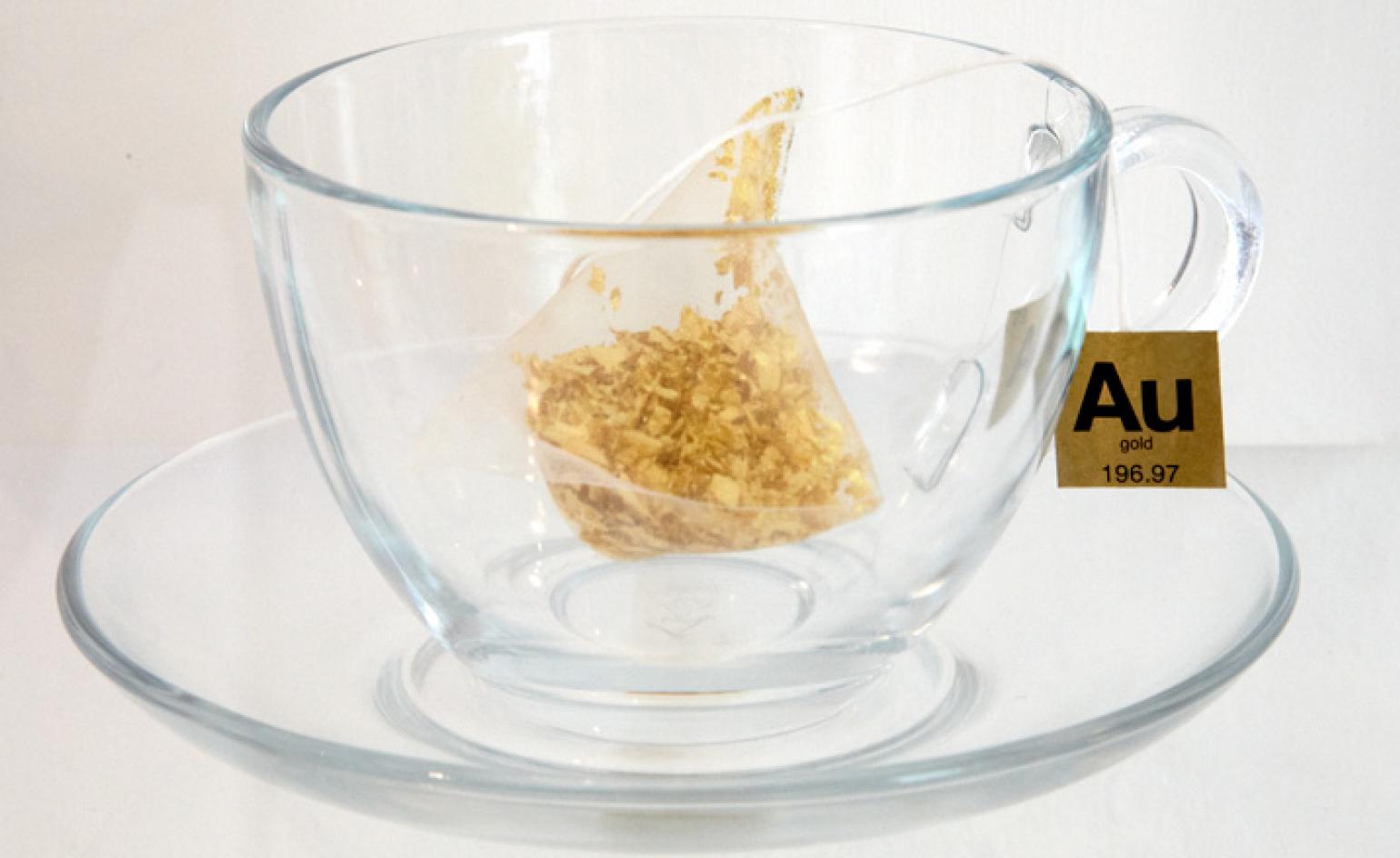
More experimentations with gold by Alice McLean
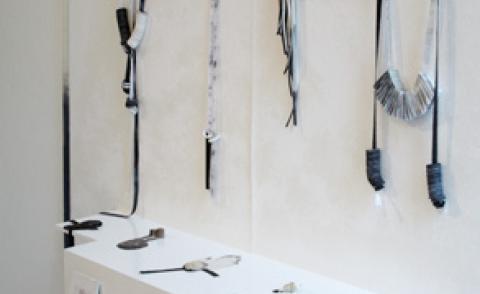
'Sequence 1' by Emelica Lidman
There's a rough quality to her work and, like other RCA students, she looks at the everyday in a heightened way. Lidman's pieces explore the nature of 'process' and our understanding of habit and ritual.
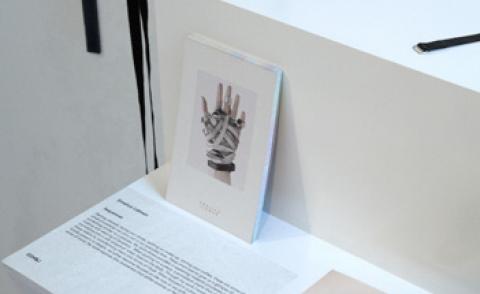
'Sequence 1' by Emelica Lidman
There's a rough quality to her work and, like other RCA students, she looks at the everyday in a heightened way. Lidman's pieces explore the nature of 'process' and our understanding of habit and ritual.
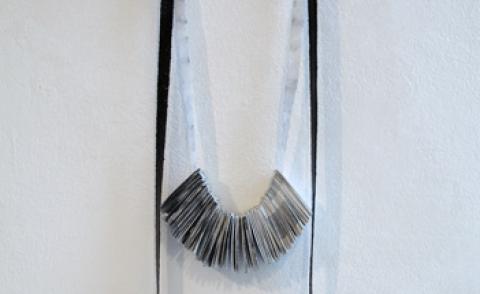
'Sequence 1' by Emelica Lidman
There's a rough quality to her work and, like other RCA students, she looks at the everyday in a heightened way. Lidman's pieces explore the nature of 'process' and our understanding of habit and ritual.

Jewellery by Ha-Yeon Lee
Juxtaposition between natural and polished stones and metal in Ha-Yeon Lee's work creates an intriguing effect. The collection - incorporating silver, fresh water pearls, steel, rough diamonds and enamel - explores the notion of constant change, and the different use of materials signify the various moods we encounter in various states of flux.
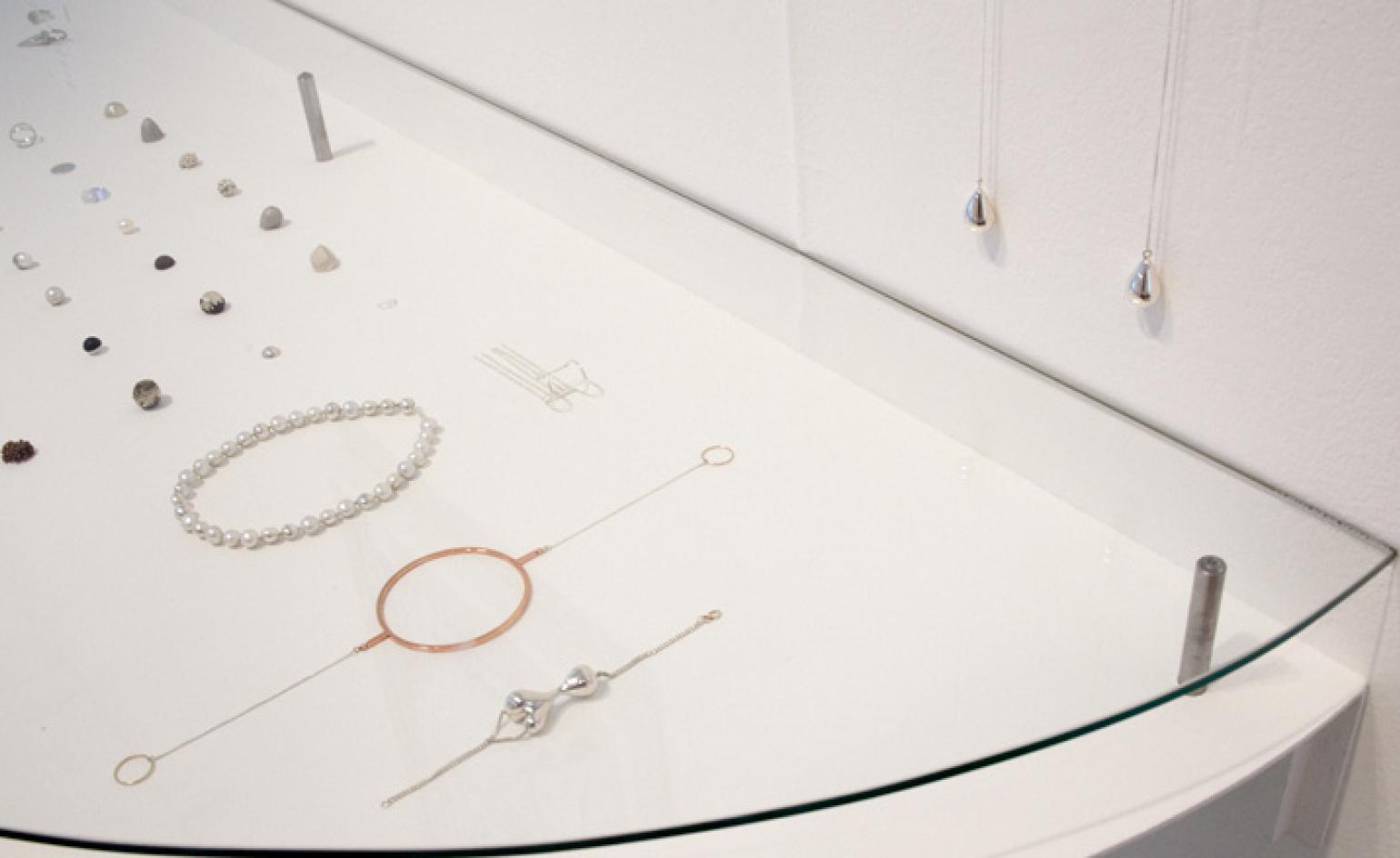
Jewellery by Ha-Yeon Lee
Juxtaposition between natural and polished stones and metal in Ha-Yeon Lee's work creates an intriguing effect. The collection - incorporating silver, fresh water pearls, steel, rough diamonds and enamel - explores the notion of constant change, and the different use of materials signify the various moods we encounter in various states of flux.
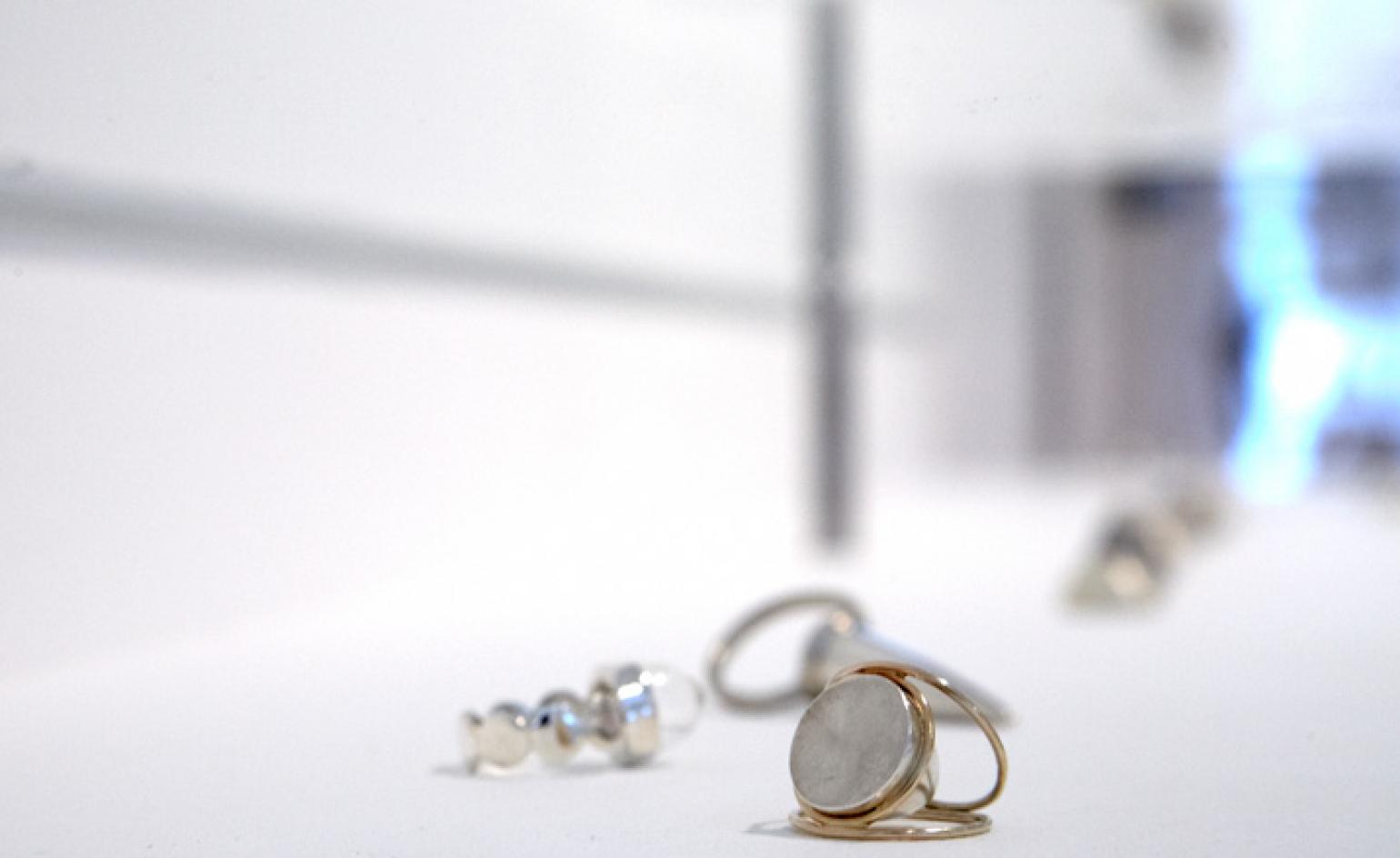
Jewellery by Ha-Yeon Lee
Juxtaposition between natural and polished stones and metal in Ha-Yeon Lee's work creates an intriguing effect. The collection - incorporating silver, fresh water pearls, steel, rough diamonds and enamel - explores the notion of constant change, and the different use of materials signify the various moods we encounter in various states of flux.

Jewellery by Ha-Yeon Lee
Juxtaposition between natural and polished stones and metal in Ha-Yeon Lee's work creates an intriguing effect. The collection - incorporating silver, fresh water pearls, steel, rough diamonds and enamel - explores the notion of constant change, and the different use of materials signify the various moods we encounter in various states of flux.
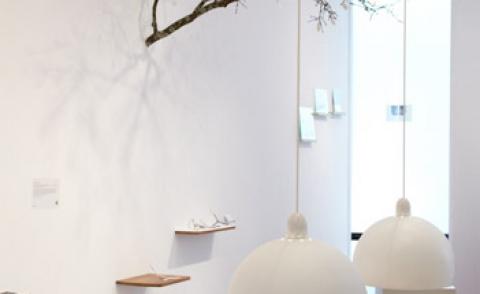
'In My Dreams, Spoon and I…' by Sarah Hurtigkarl
Hurtigkarl uses materials interestingly to heighten the pleasure and shapes of everyday objects - spoons, sugar bowls - so they take on a dream-like, sensual quality. The use of a hollowed tree affixed to the wall endeavours to take the observer into an imaginary world where the work appears to be growing. This environment morphs and transforms the everyday into a fantasy.
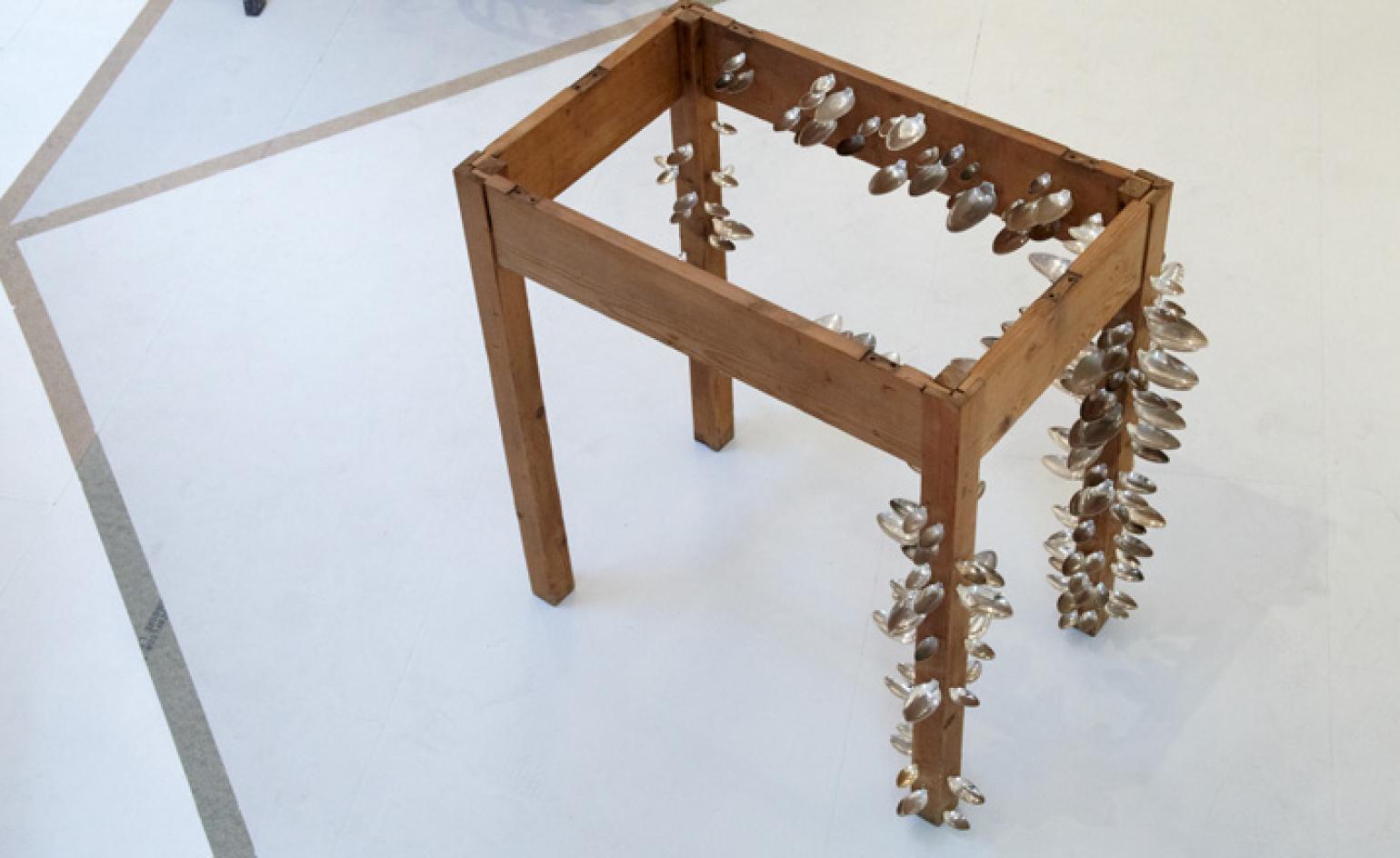
'In My Dreams, Spoon and I…' by Sarah Hurtigkarl
Hurtigkarl uses materials interestingly to heighten the pleasure and shapes of everyday objects - spoons, sugar bowls - so they take on a dream-like, sensual quality. The use of a hollowed tree affixed to the wall endeavours to take the observer into an imaginary world where the work appears to be growing. This environment morphs and transforms the everyday into a fantasy.
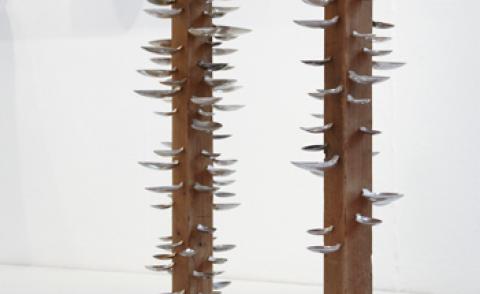
'In My Dreams, Spoon and I…' by Sarah Hurtigkarl
Hurtigkarl uses materials interestingly to heighten the pleasure and shapes of everyday objects - spoons, sugar bowls - so they take on a dream-like, sensual quality. The use of a hollowed tree affixed to the wall endeavours to take the observer into an imaginary world where the work appears to be growing. This environment morphs and transforms the everyday into a fantasy.
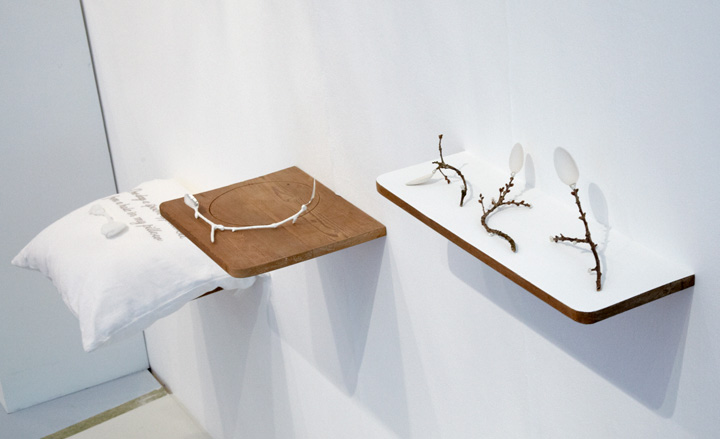
'In My Dreams, Spoon and I…' by Sarah Hurtigkarl
Hurtigkarl uses materials interestingly to heighten the pleasure and shapes of everyday objects - spoons, sugar bowls - so they take on a dream-like, sensual quality. The use of a hollowed tree affixed to the wall endeavours to take the observer into an imaginary world where the work appears to be growing. This environment morphs and transforms the everyday into a fantasy.
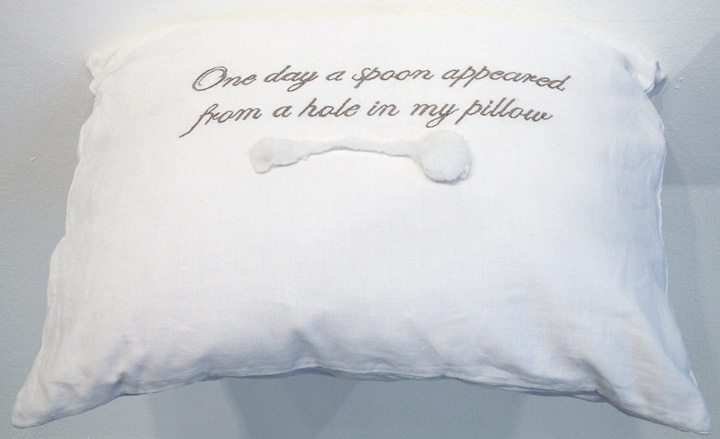
'In My Dreams, Spoon and I…' by Sarah Hurtigkarl
Hurtigkarl uses materials interestingly to heighten the pleasure and shapes of everyday objects - spoons, sugar bowls - so they take on a dream-like, sensual quality. The use of a hollowed tree affixed to the wall endeavours to take the observer into an imaginary world where the work appears to be growing. This environment morphs and transforms the everyday into a fantasy.
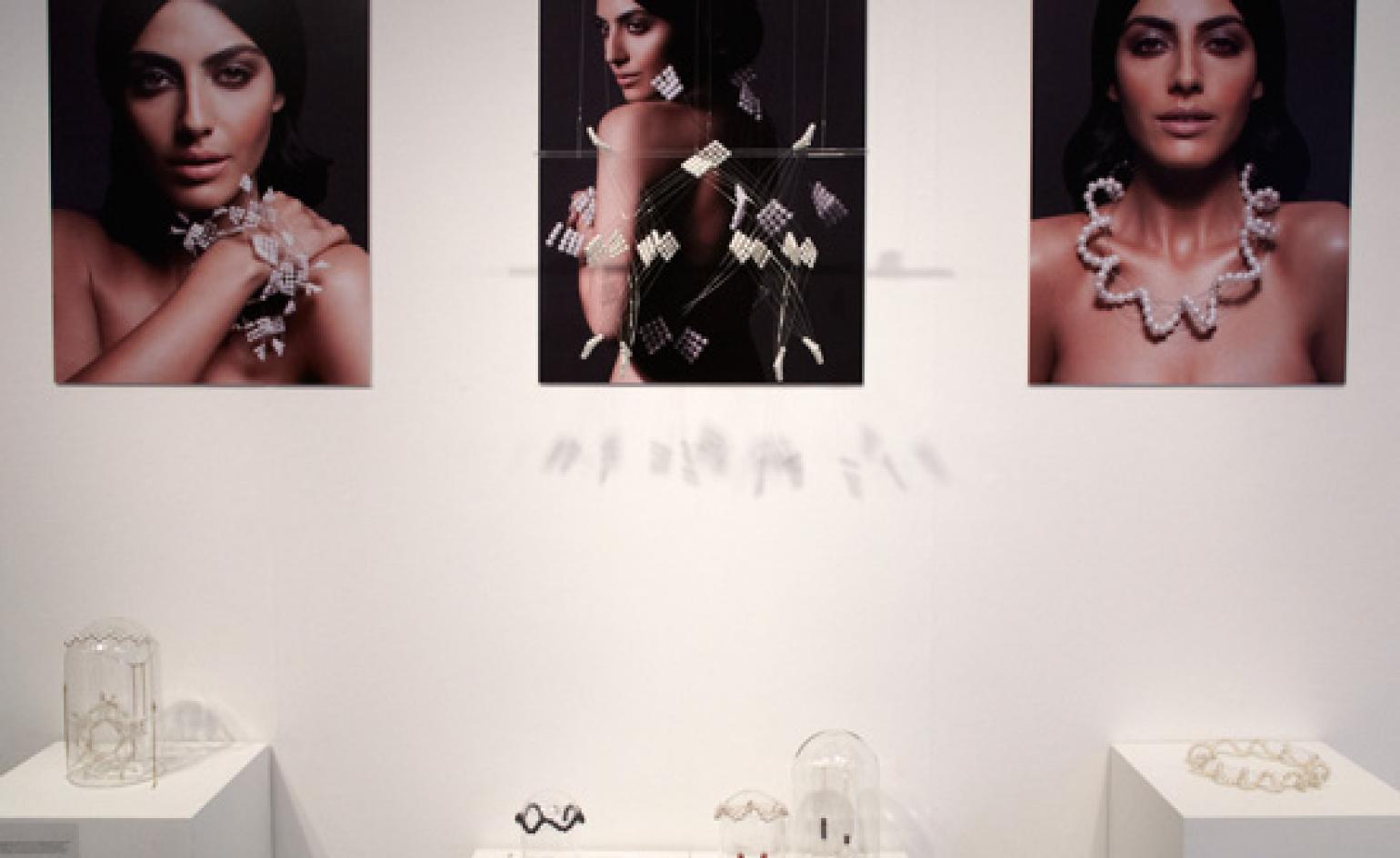
'Seven Helix' by Tina Tianhong Zhang
Zhang reworks traditional materials into something altogether more modern. The pearl necklace is constructed in a form that we're not accustomed to, by being drilled four ways through the pearl. The pearls act as a binding force, holding the network of wire together, in distinct role reversal from the norm.
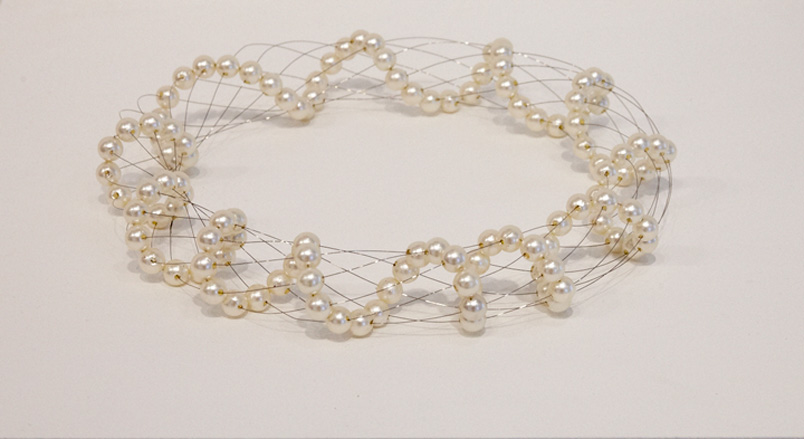
'Seven Helix' by Tina Tianhong Zhang
Zhang reworks traditional materials into something altogether more modern. The pearl necklace is constructed in a form that we're not accustomed to, by being drilled four ways through the pearl. The pearls act as a binding force, holding the network of wire together, in distinct role reversal from the norm.
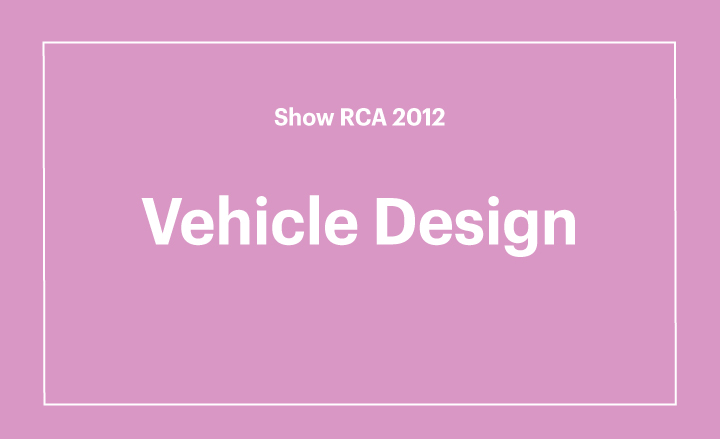
The conventional form of the car is even more abstracted as the students look at ways that new materials and technologies can re-work our preconceived notion of what shape the car should take and how it will be used in a society with changing obligations and demands. Sustainable materials, rapid manufacturing and car sharing all offer up a new landscape of brands and the way we interact with them.
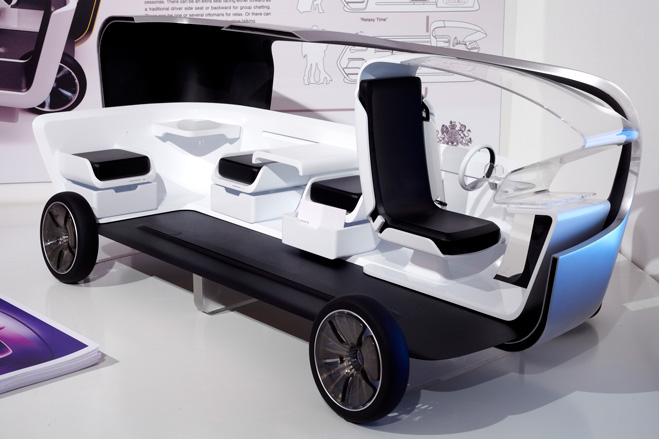
'Cubie' by Haitao Qi
Qi's work has been made using Photoshop, CAD and rapid prototyping. It looks at the notion of 'what is design?', exploring the intrusiveness of cars in society, looking at how to minimise the car's impact on human life and the city. The piece aims to explore the possibilities of customising a space that can function effectively while idle and mobile, by enabling a variety of in-car activities through online connectivity.
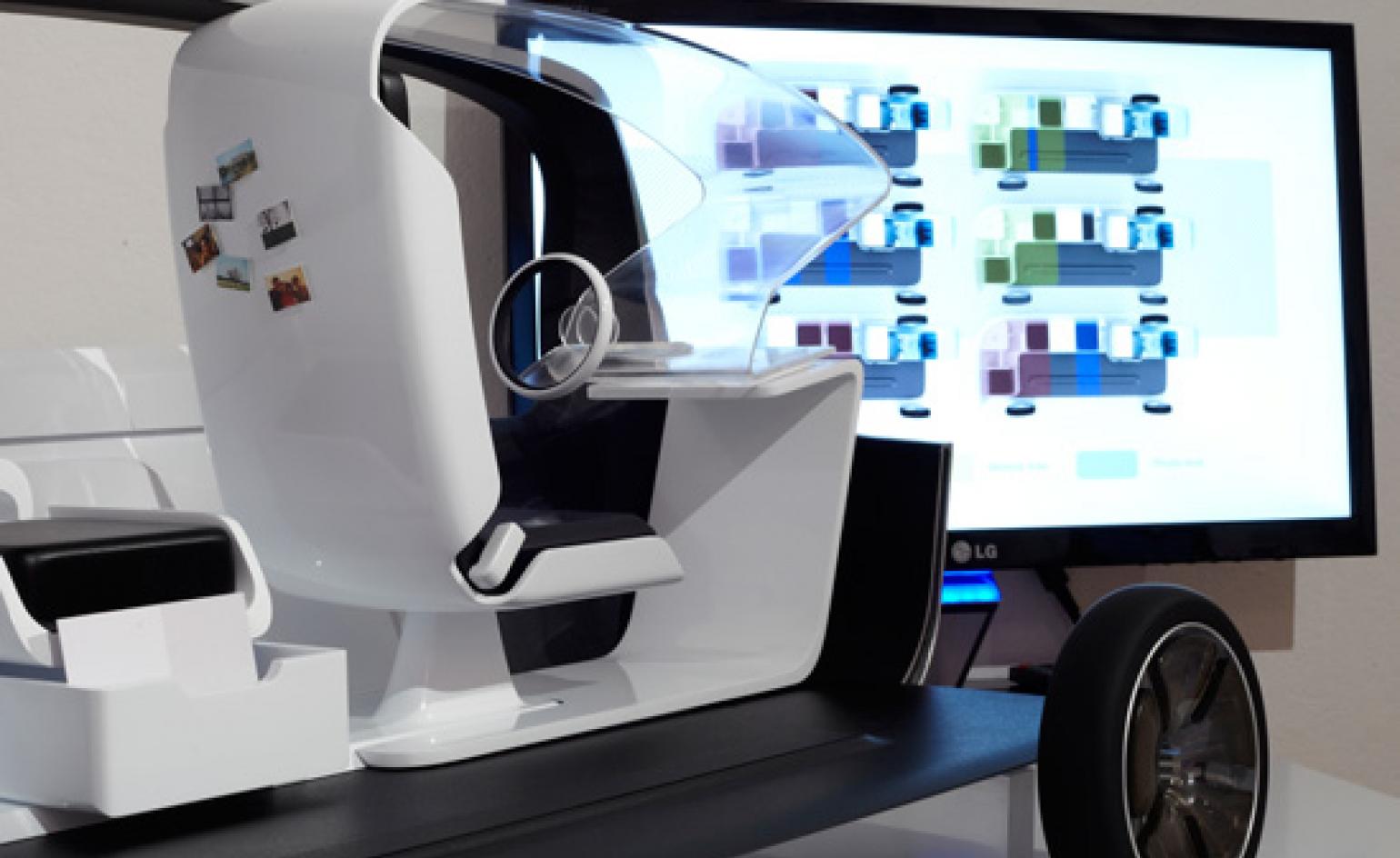
'Cubie' by Haitao Qi
Qi's work has been made using Photoshop, CAD and rapid prototyping. It looks at the notion of 'what is design?', exploring the intrusiveness of cars in society, looking at how to minimise the car's impact on human life and the city. The piece aims to explore the possibilities of customising a space that can function effectively while idle and mobile, by enabling a variety of in-car activities through online connectivity.
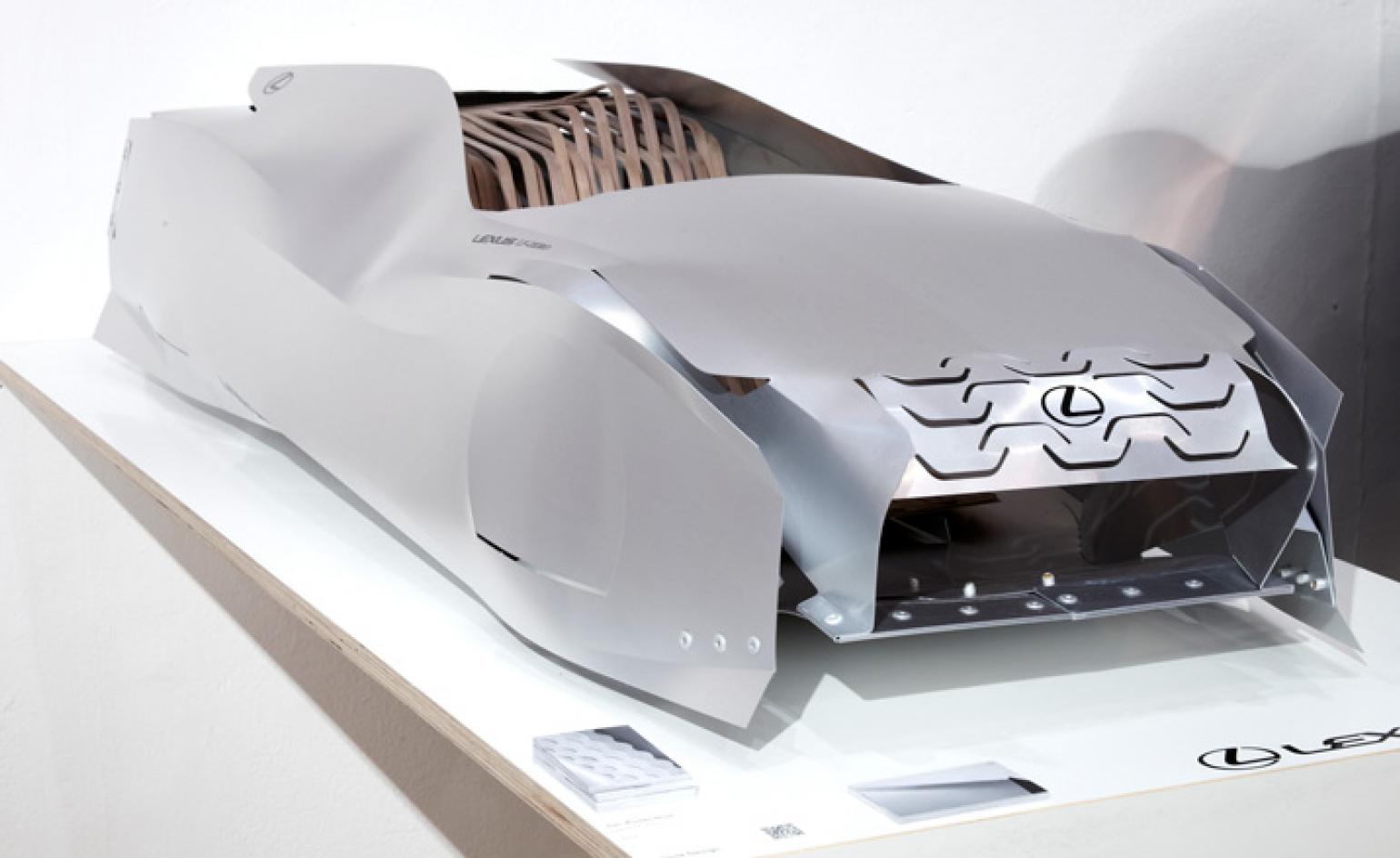
'Lexus LF-Zero' by Jan Rosenthal
Rosenthal's work is made from single rectangular aluminium and wooden sheets. It is a completely waste-free sculpture, made from materials that are representative of both technosphere recycling and biosphere decomposition. Rosenthal is intrigued by the opportunity to create greater eco-awareness through truly sustainable, tangible and relatable materials.
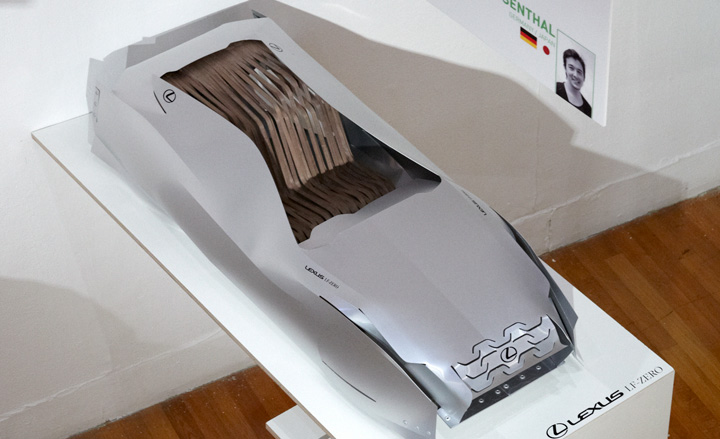
'Lexus LF-Zero' by Jan Rosenthal
Rosenthal's work is made from single rectangular aluminium and wooden sheets. It is a completely waste-free sculpture, made from materials that are representative of both technosphere recycling and biosphere decomposition. Rosenthal is intrigued by the opportunity to create greater eco-awareness through truly sustainable, tangible and relatable materials.
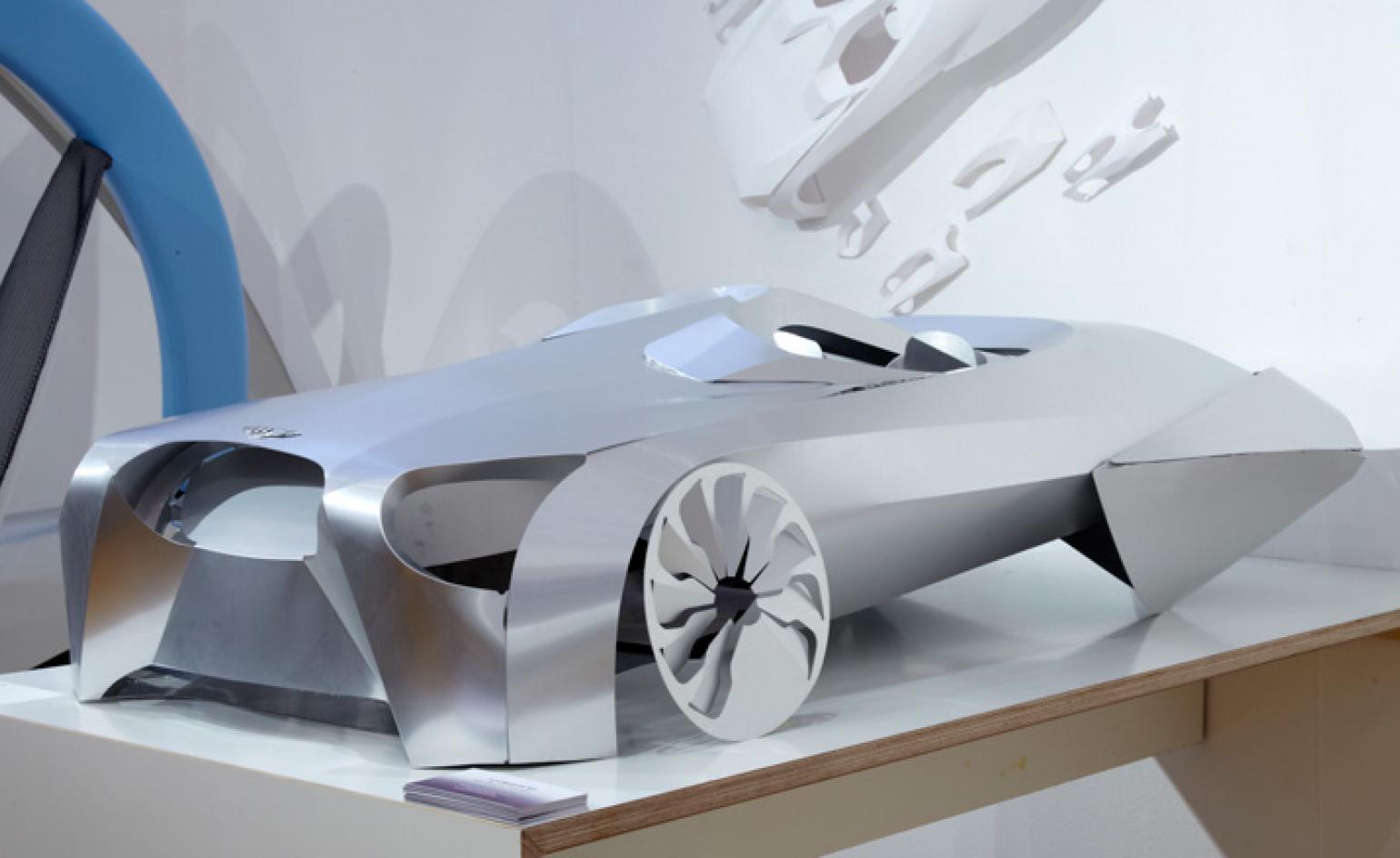
'Tailor-Made' by Kyungeun Ko
Made using paper, Ko's project explores craftsmanship in a modern context, inspired by the concept of origami. 'Robo-folding' is a technology that folds metal like paper. This technology enables metal products with low energy and minimal facility. Ko's work proposes a new way of producing beautiful luxury vehicles and a new design language as a result
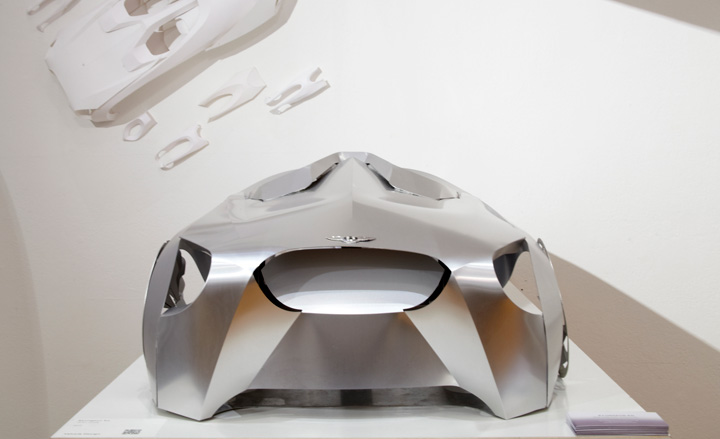
'Tailor-Made' by Kyungeun Ko
Made using paper, Ko's project explores craftsmanship in a modern context, inspired by the concept of origami. 'Robo-folding' is a technology that folds metal like paper. This technology enables metal products with low energy and minimal facility. Ko's work proposes a new way of producing beautiful luxury vehicles and a new design language as a result
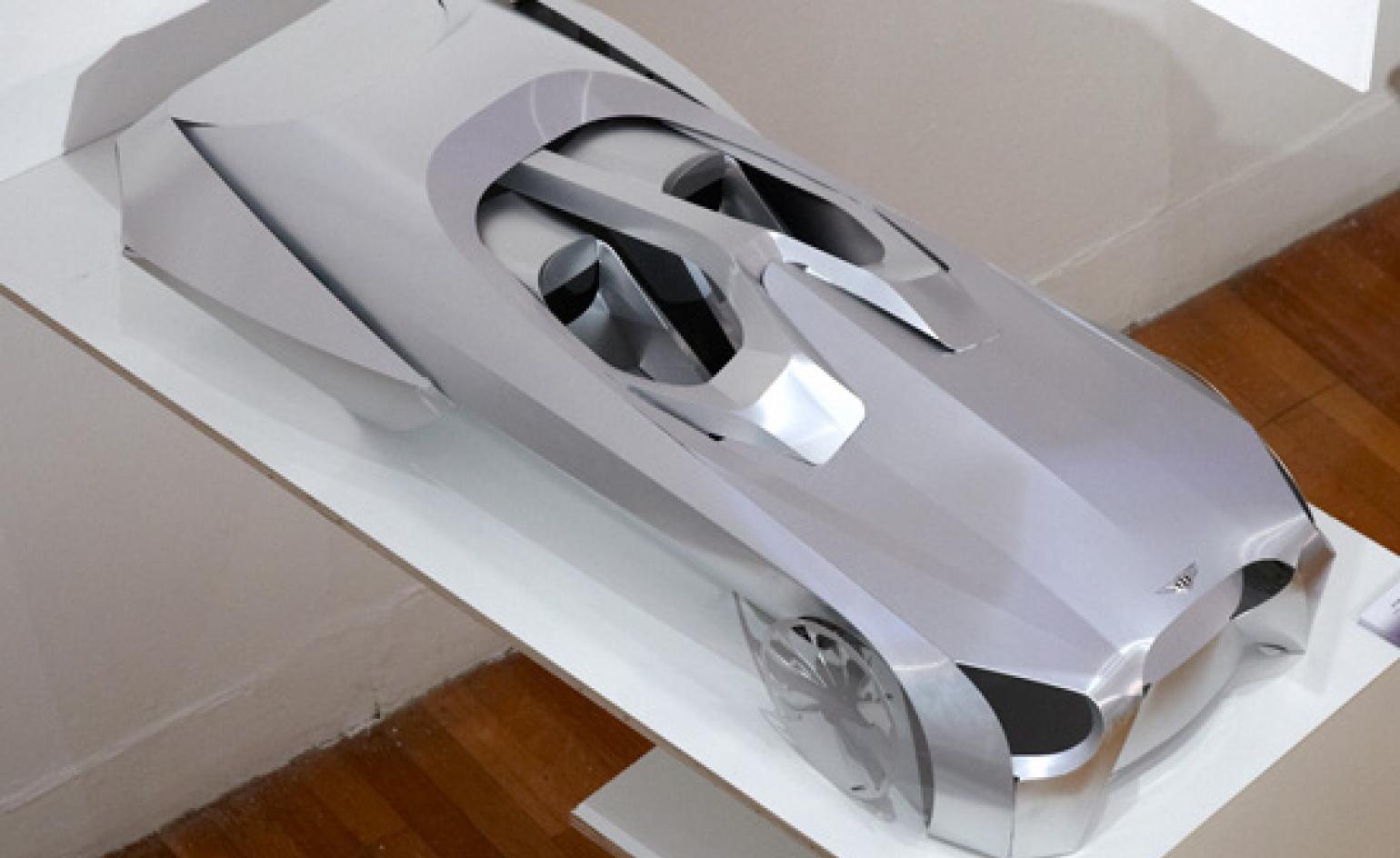
'Tailor-Made' by Kyungeun Ko
Made using paper, Ko's project explores craftsmanship in a modern context, inspired by the concept of origami. 'Robo-folding' is a technology that folds metal like paper. This technology enables metal products with low energy and minimal facility. Ko's work proposes a new way of producing beautiful luxury vehicles and a new design language as a result
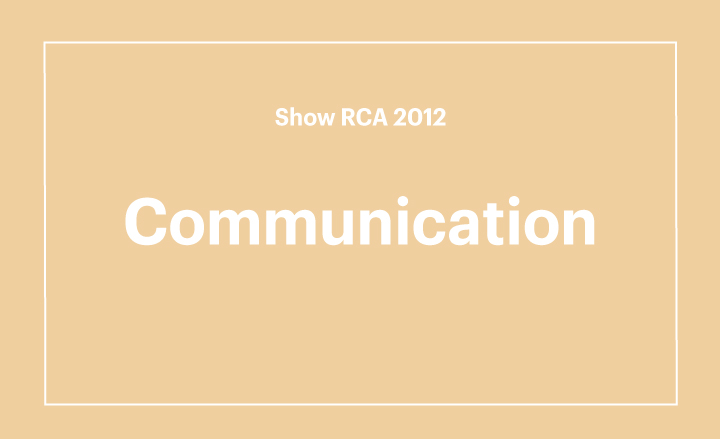
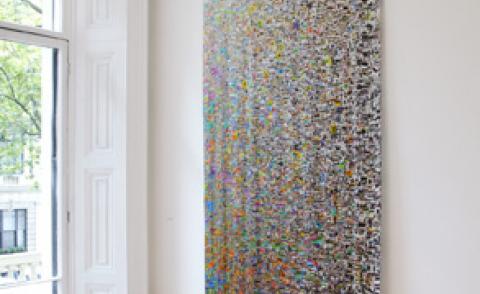

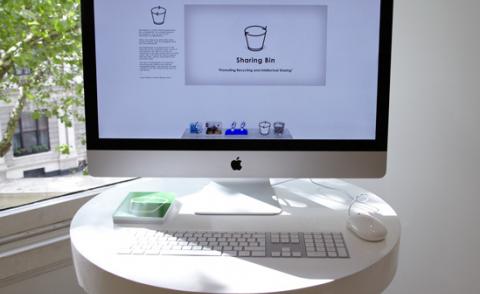
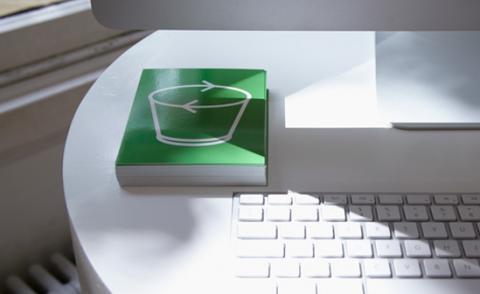
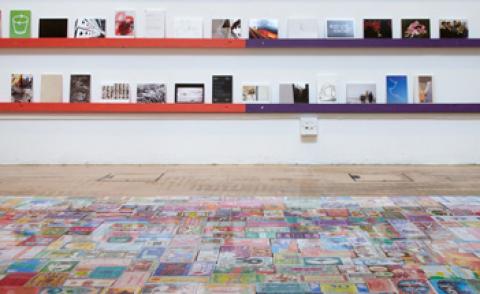
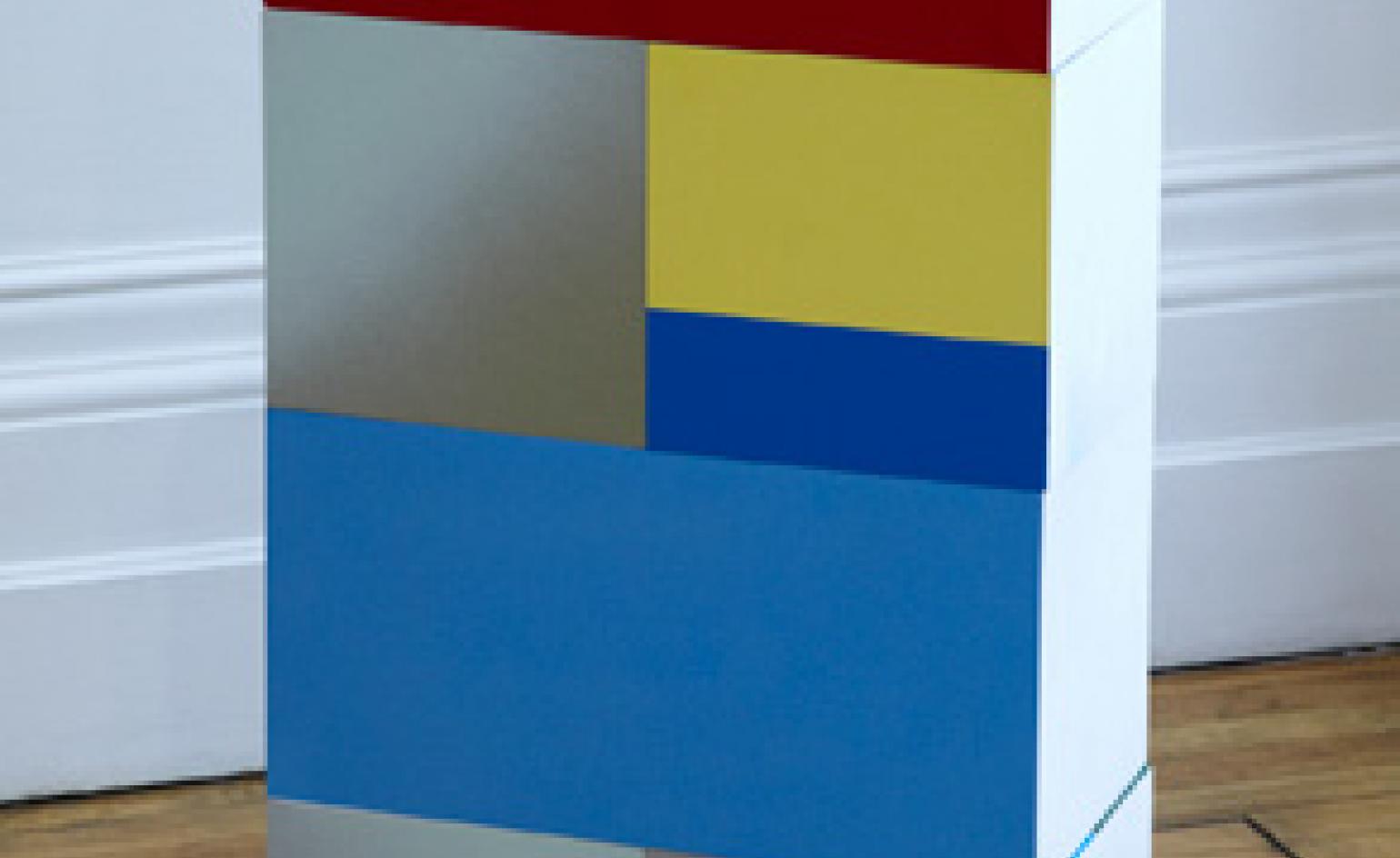
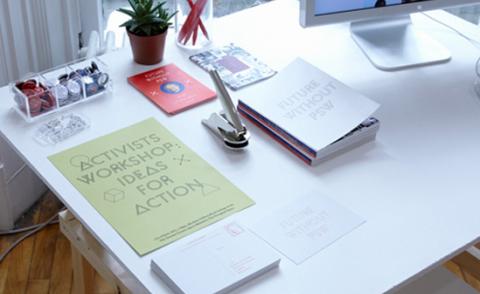

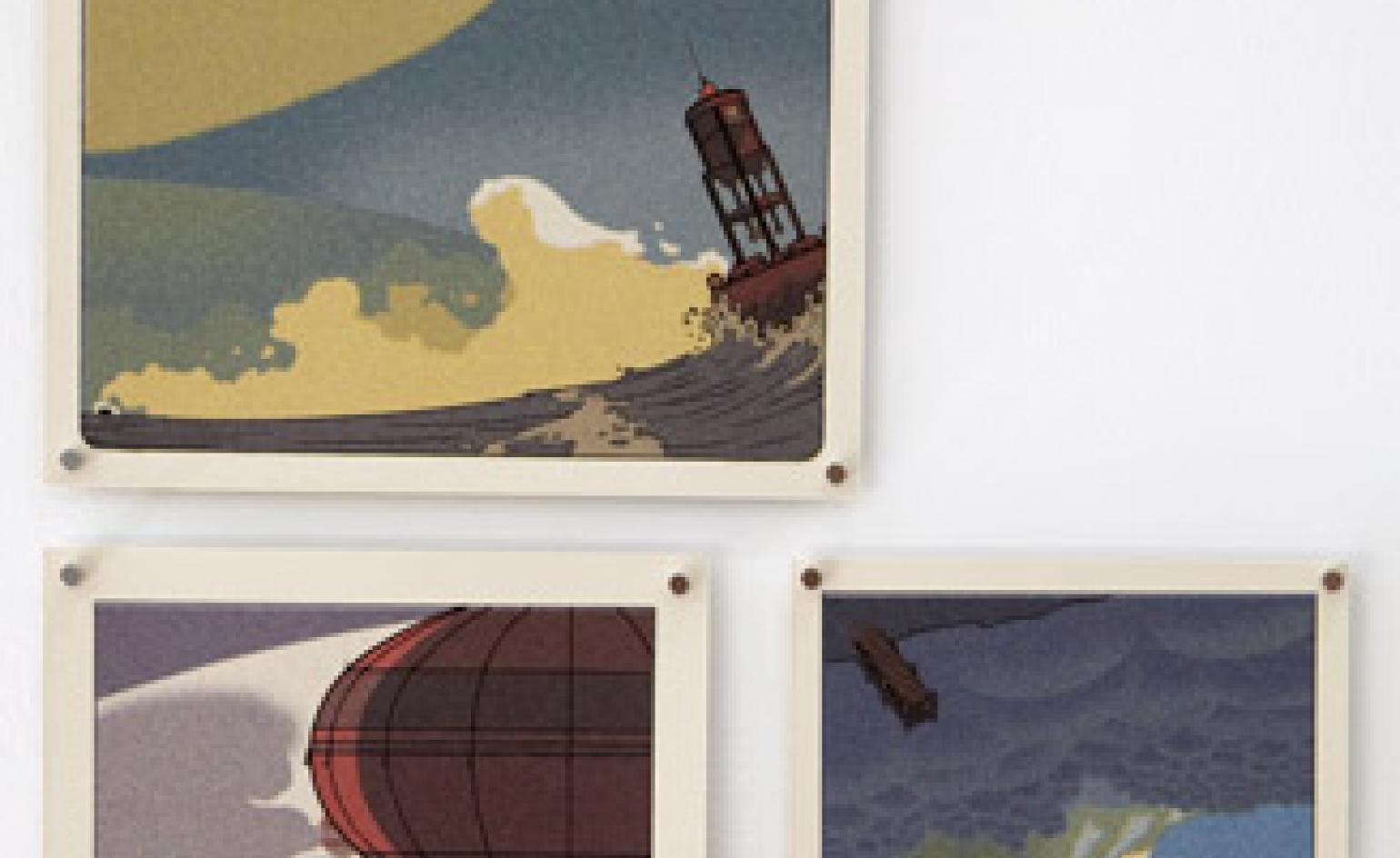
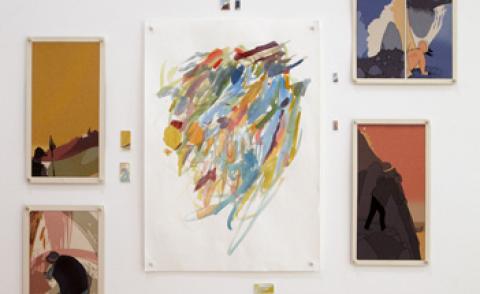
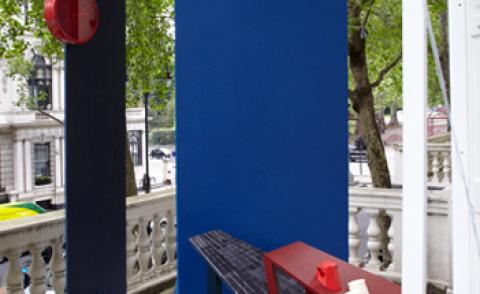
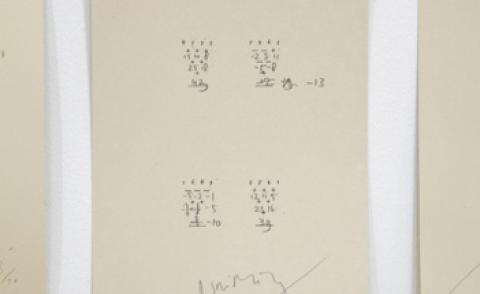
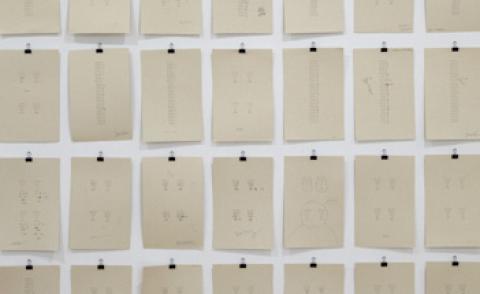
Rosa Bertoli was born in Udine, Italy, and now lives in London. Since 2014, she has been the Design Editor of Wallpaper*, where she oversees design content for the print and online editions, as well as special editorial projects. Through her role at Wallpaper*, she has written extensively about all areas of design. Rosa has been speaker and moderator for various design talks and conferences including London Craft Week, Maison & Objet, The Italian Cultural Institute (London), Clippings, Zaha Hadid Design, Kartell and Frieze Art Fair. Rosa has been on judging panels for the Chart Architecture Award, the Dutch Design Awards and the DesignGuild Marks. She has written for numerous English and Italian language publications, and worked as a content and communication consultant for fashion and design brands.
-
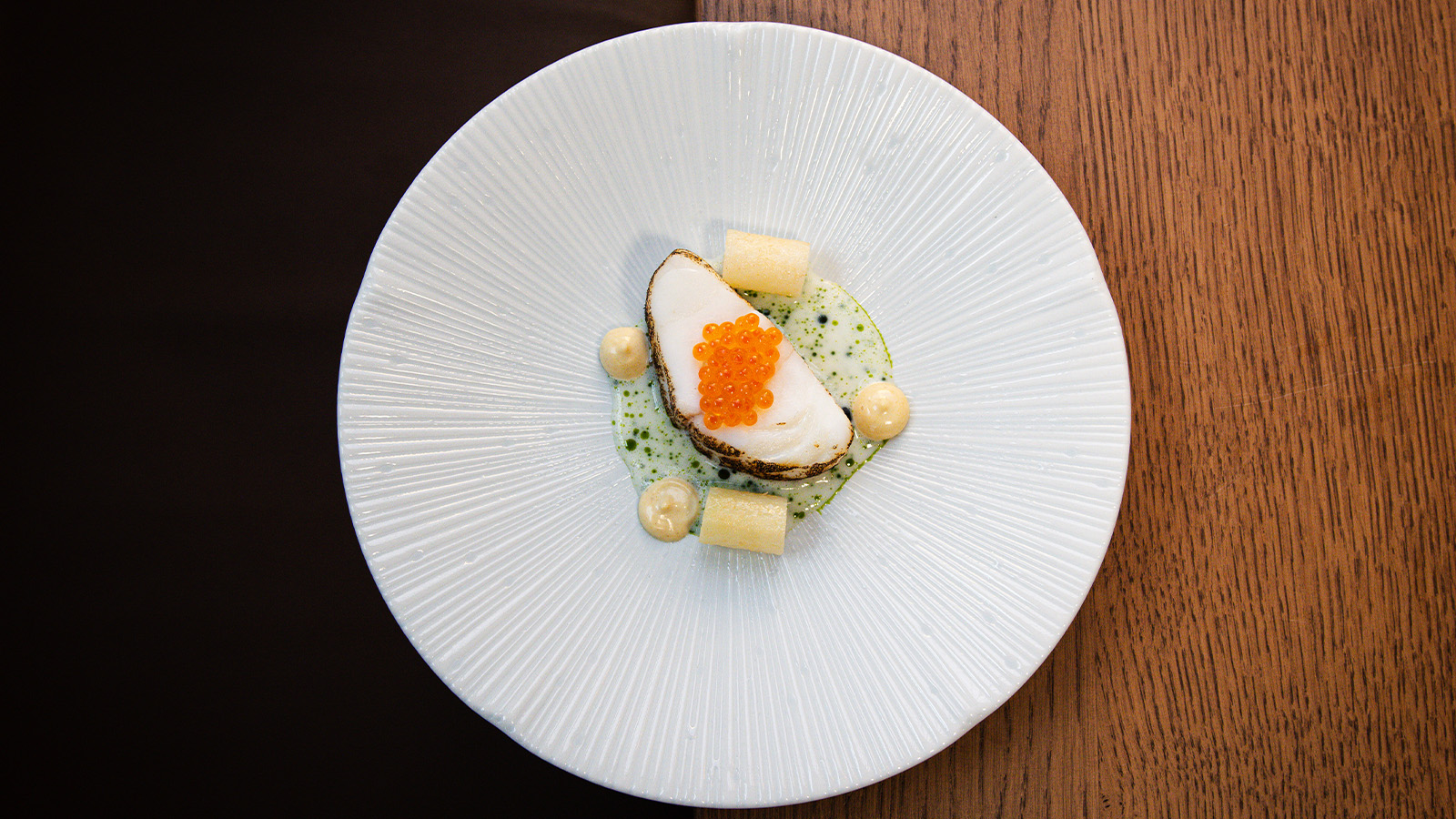 In Wales, Michelin-starred Gorse celebrates the country’s abundant larder
In Wales, Michelin-starred Gorse celebrates the country’s abundant larderGorse is the first Michelin-starred restaurant in Cardiff, putting Welsh cuisine on the map. We speak with chef and founder Tom Waters about the importance of keeping culinary traditions alive
By Tianna Williams
-
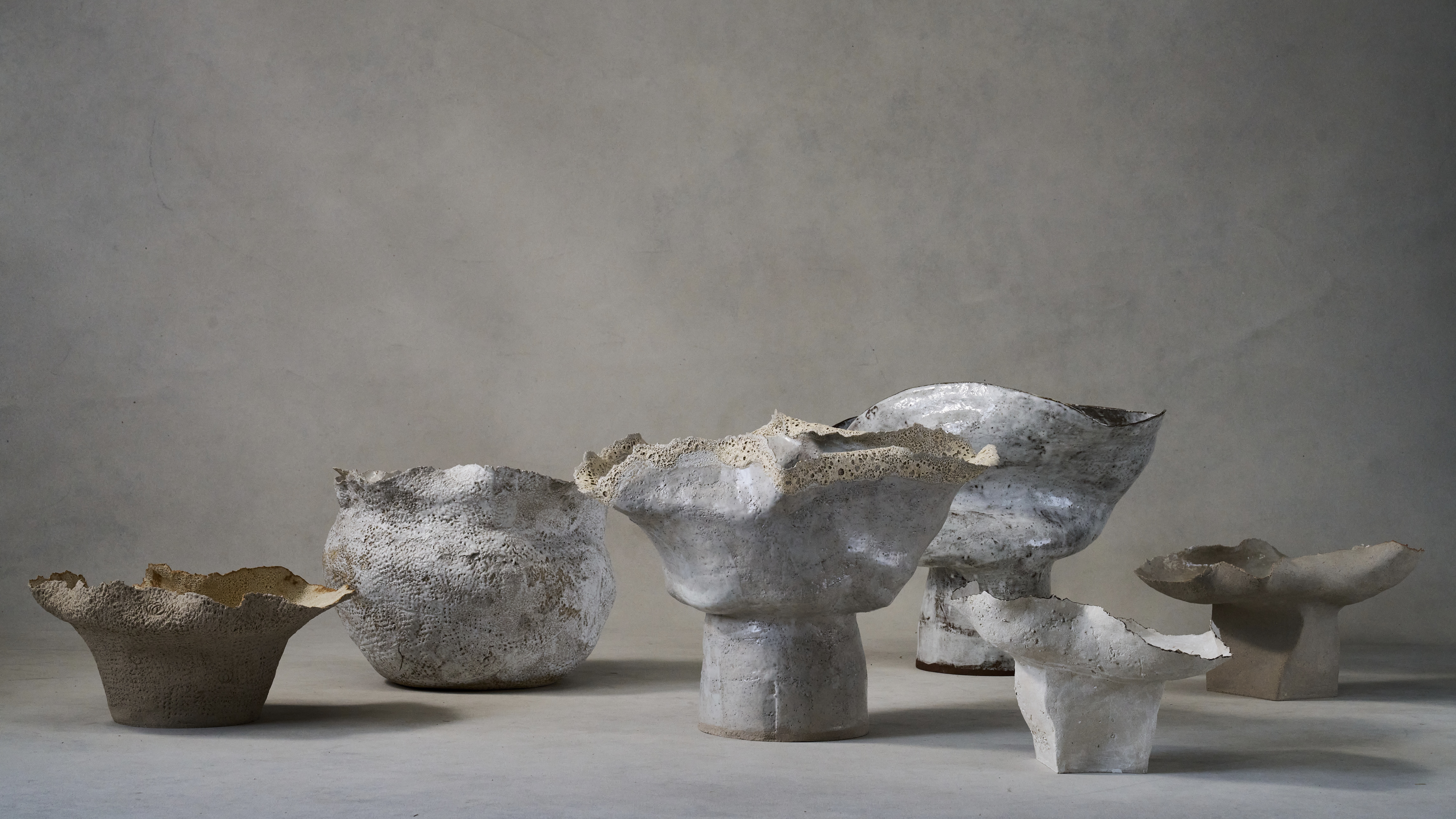 Ludmilla Balkis’ organic, earthy ceramics embody the Basque countryside
Ludmilla Balkis’ organic, earthy ceramics embody the Basque countrysideThe sculptor-ceramicist presents a series inspired by and created from found natural objects in a New York exhibition
By Anna Solomon
-
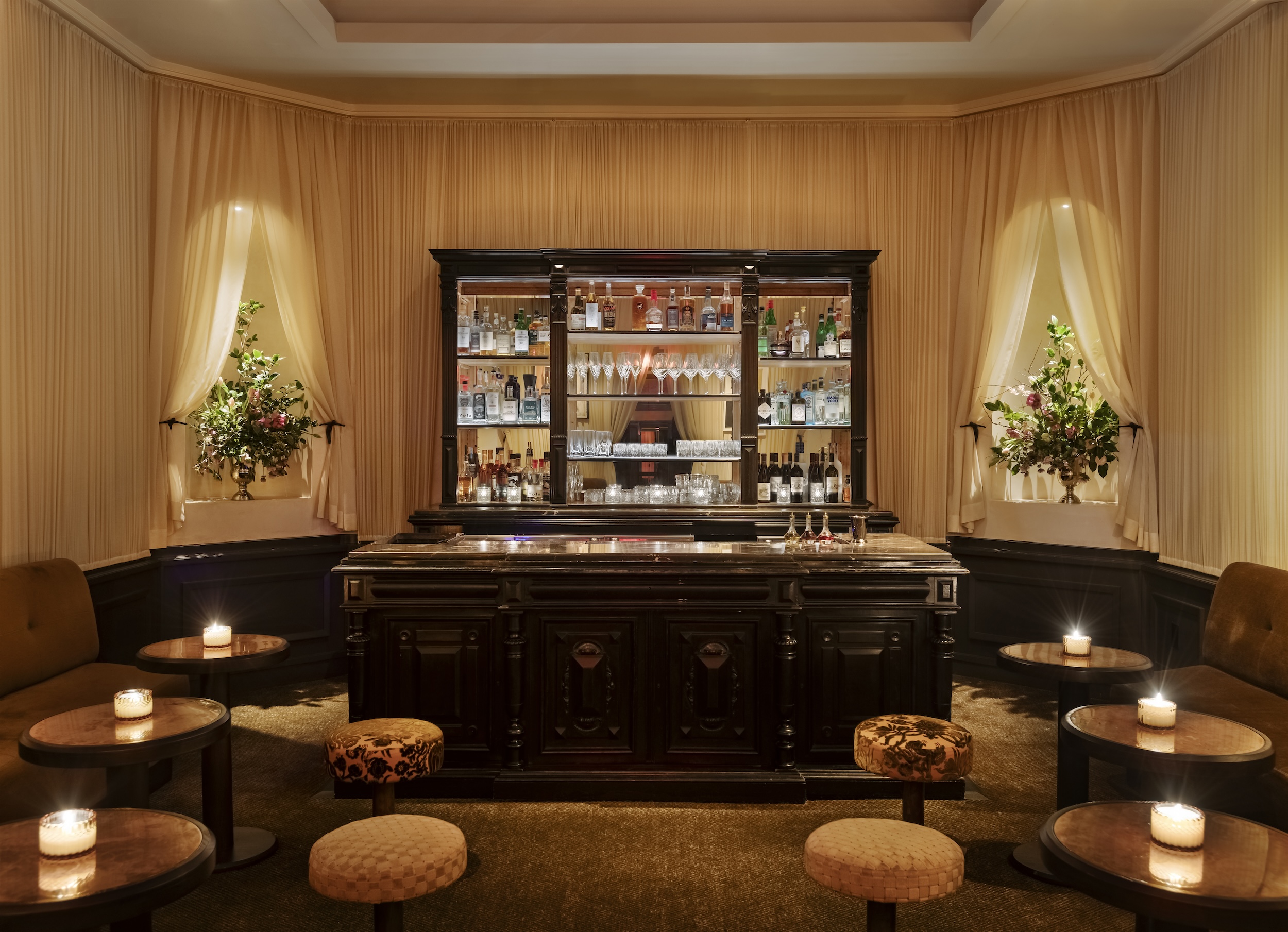 At this secret NYC hangout, the drinks are strong and the vibes are stronger
At this secret NYC hangout, the drinks are strong and the vibes are strongerFor People's bar, Workstead serves up a good time
By Anna Fixsen